Part 5 - Shimizu (Mt. Fuji), Japan

Part 5 - Shimizu (Mt. Fuji)
The next adventure wasn’t long in coming. At about 8.00am the following day, we reached Shimizu, the city at the foot of the volcano Mount Fuji, which we could already see from our balcony.
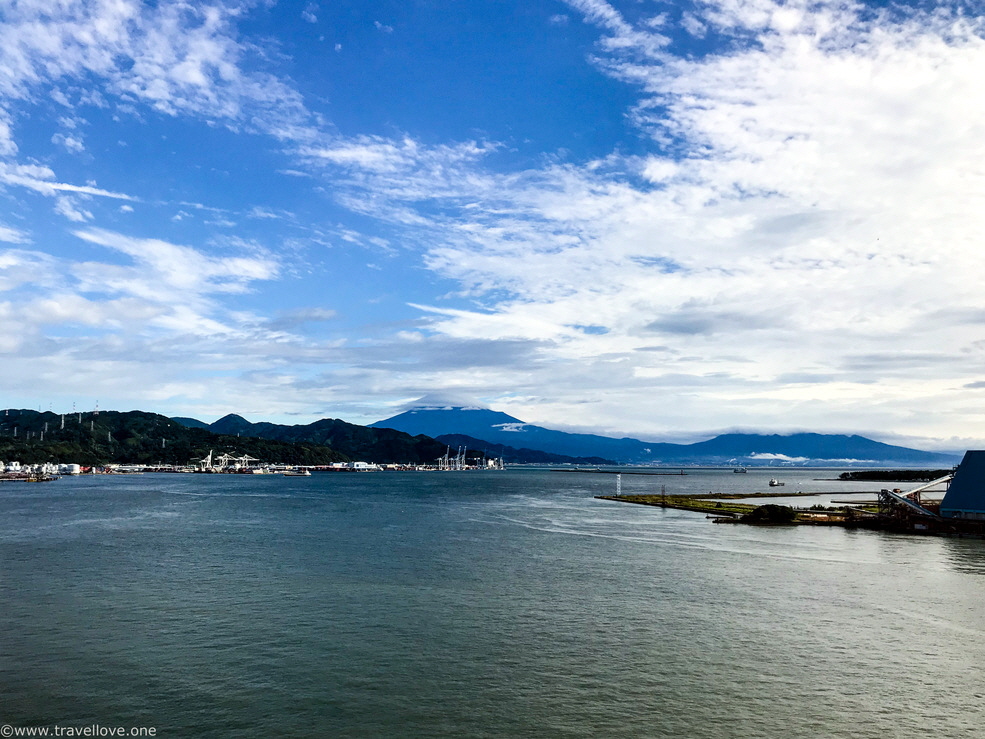
Not much later we docked in the port of Shimizu, where we were welcomed by a large signboard.
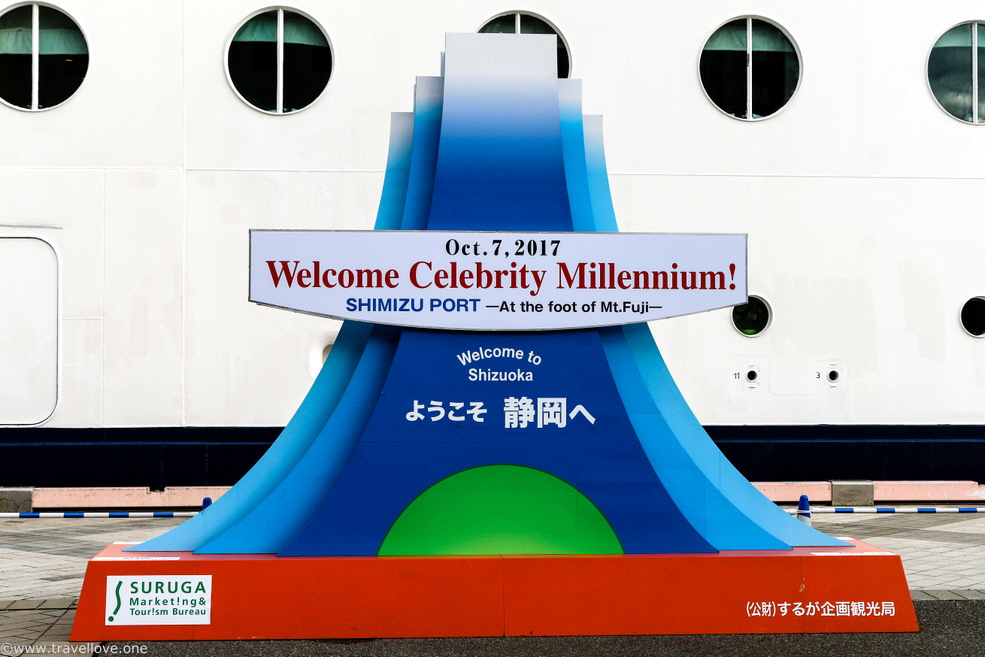
We had booked a tour with Triplelights again. This time, Beverly and Wayne joined us, with whom we had connected via CruiseCritic. Just the four of us, we were really a very small group.
Koji, our tour guide, was waiting for us as the exit of the port with a sign in his hand. We hadn’t met Beverly and Wayne the days before, but the two also quickly found us at the port.
In a minivan he had rented, Koji first drove us to Nihondaira. The plateau above the city Shimizu/Shizuoka is known for two reasons: On one hand, of course, for its beautiful view of Mount Fuji and the peninsula of Izu, on the other hand for the tea that is grown there and that is said to be among the best varieties in Japan.
First of all, Koji took us to a tea shop on the plateau (Nihondaira Ocha Kaikan). Of course, we were a little suspicious: Is this one of those sales events? Will we be pushed into buying anything?
Our concerns proved completely unfounded. Koji exchanged a few words with the owners, who greeted us in the typical Japanese manner of reserved kindness, and asked us to proceed into a garden.
The garden was right on the edge of a tea plantation whose shrubs spread in front of us in various, rich shades of green. Behind this sea of juicy leaves rose Fuji, the shy giant.
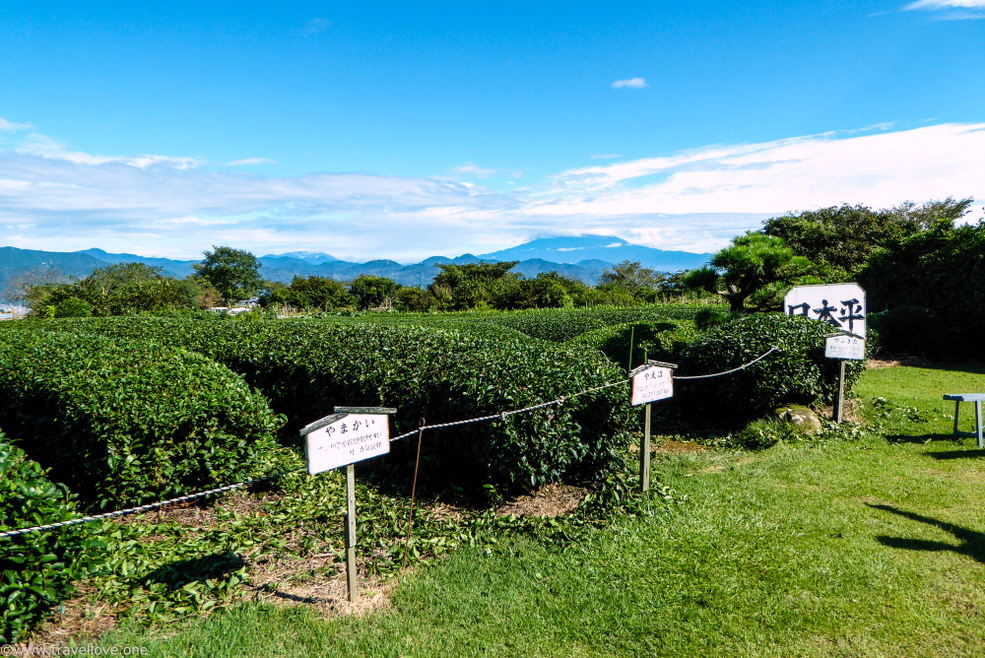
Japan’s highest mountain is UNESCO World Heritage, Japan’s landmark, Holy Mountain and actually even a God. In Japanese art, Fuji has been depicted innumerable times. No wonder every traveler to Japan wants to see it at least once – maybe even because he usually hides in mist and fog. Here we stood looking over at him.
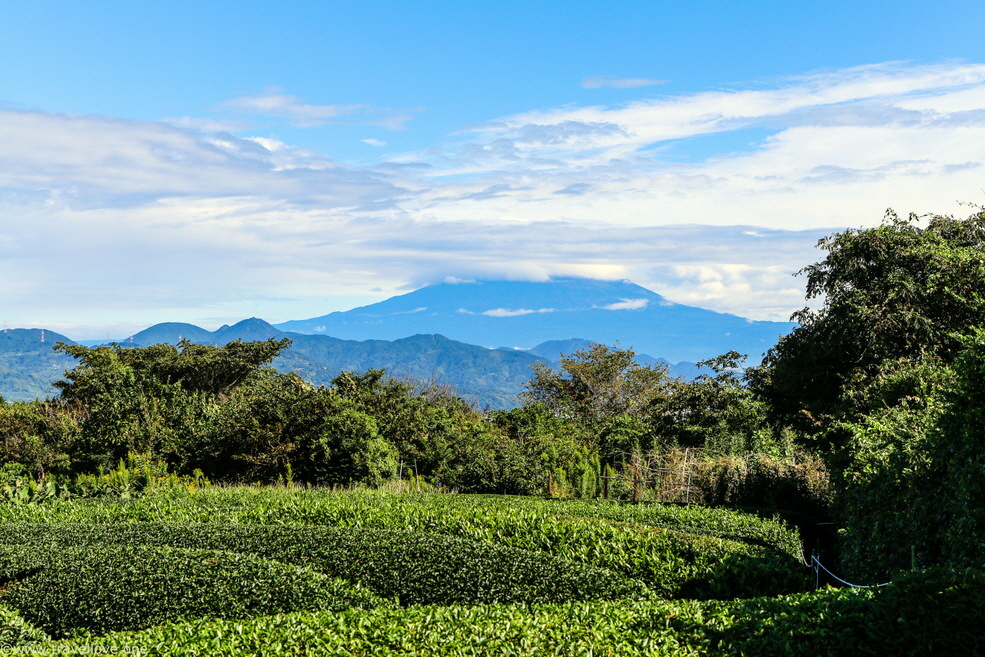
It’s hard to put into words what went through my mind at the sight of the 3,776 m (12,389 ft.) mountain. I think many of you know this feeling. You visit a place you have seen so many times on postcards, on TV, in movies etc. Although you have never been there before, it seems strangely familiar. In such moments, I am always overwhelmed by an almost staggering sense of joy mixed with deep gratitude for experiencing and seeing it all. It think it’s this feeling that also spurs our desire to travel.
Even now, Fuji was a bit shy, as Koji expressed almost apologetically. But he added that Fuji-san with only his head covered was already an unusually revealing sight.
Without being bothered the slightest bit by the shopkeepers, we returned to the car with an “Arigatou gozaimasu” on our lips, and Koji drove us a little further to the Nihondaira cable car station.
He bought our tickets and we boarded the gondola, which took us in about 5 minutes to the Kunoyan Toshogu Shrine about one kilometer (0.6 miles) away and thus to the shrine of the Shogun Tokugawa Ieyasu.
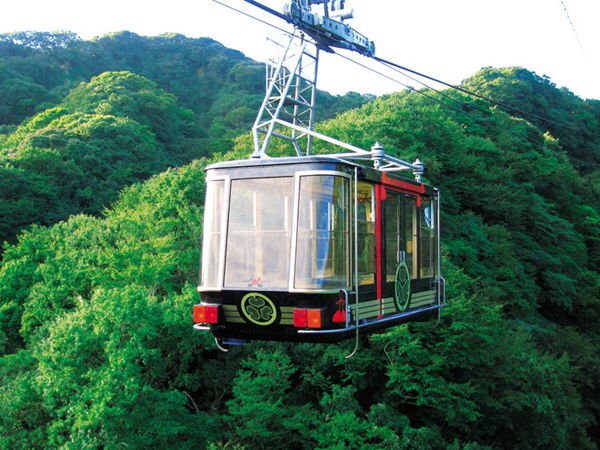
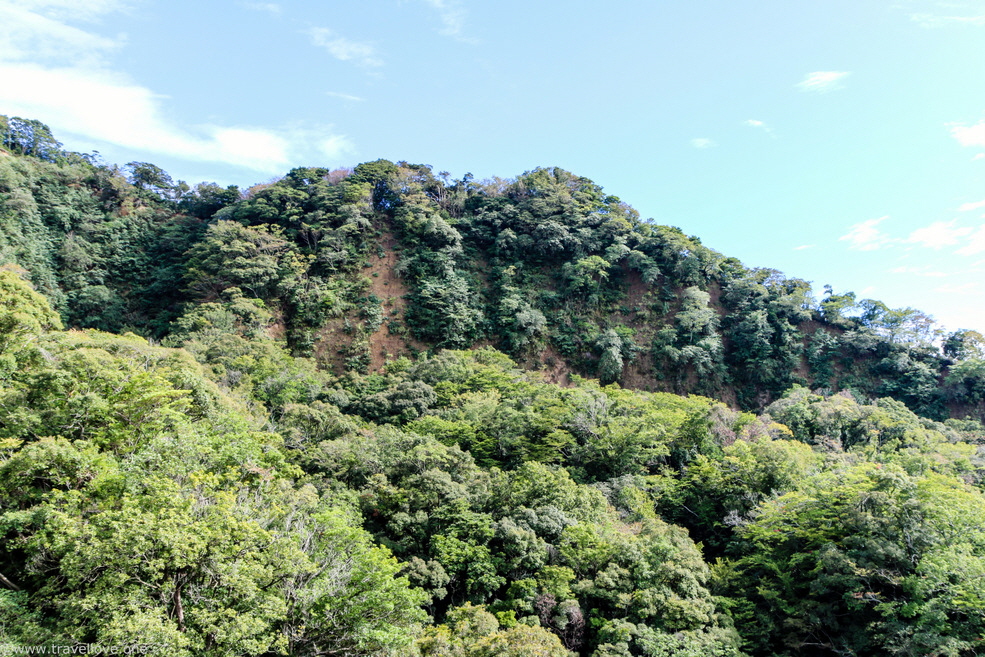
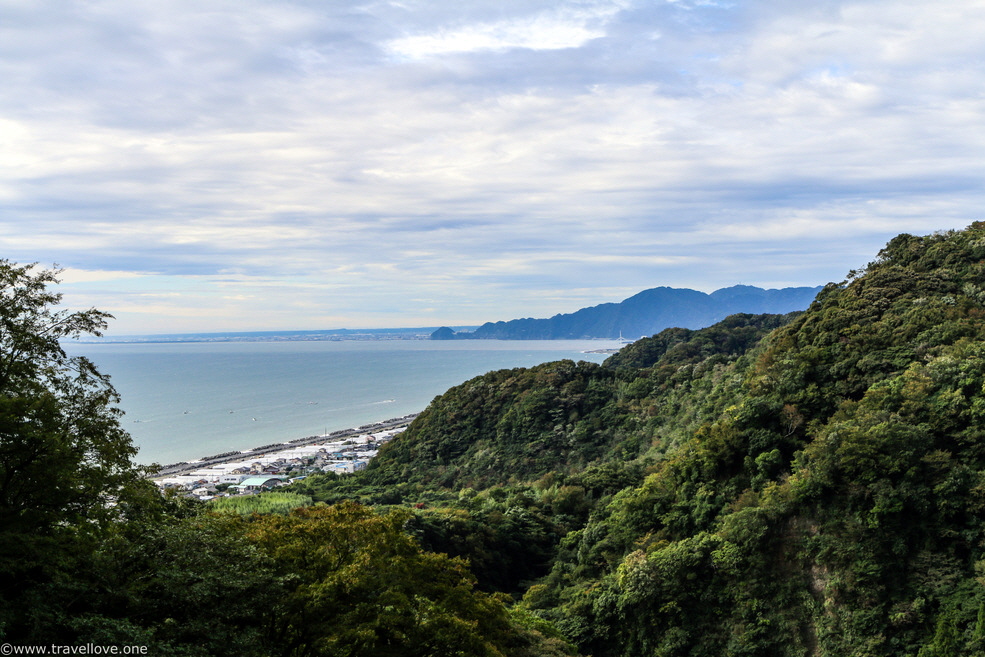
When he died in April 1616, Tokugawa Ieyasu, the founder of the last powerful shogunate, of whom we had already heard in Tokyo, had reached the age of 75, which was very respectable at the time. On his deathbed he expressed his last wish and command to his retainers that he wanted to be buried on the slope of Mount Kuno.
The second shogun, Prince Hidetada, commissioned an architect to build a shrine in which the faded Prince Ieyasu could be worshipped. Construction began in May 1616 and was completed 19 months later.
Today we were greeted by magnificent buildings in a dense bamboo forest.
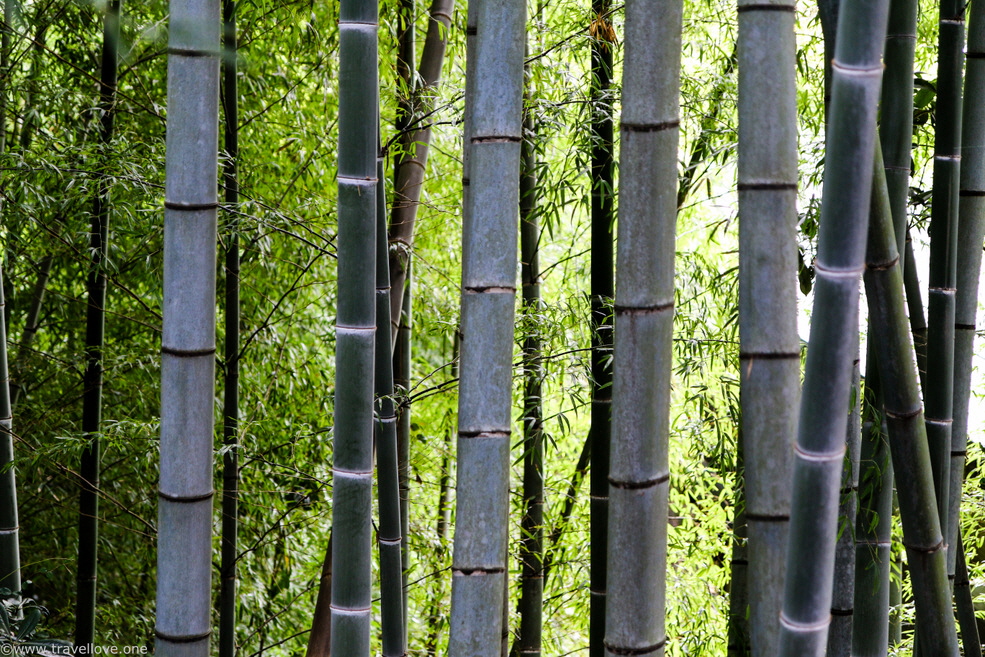
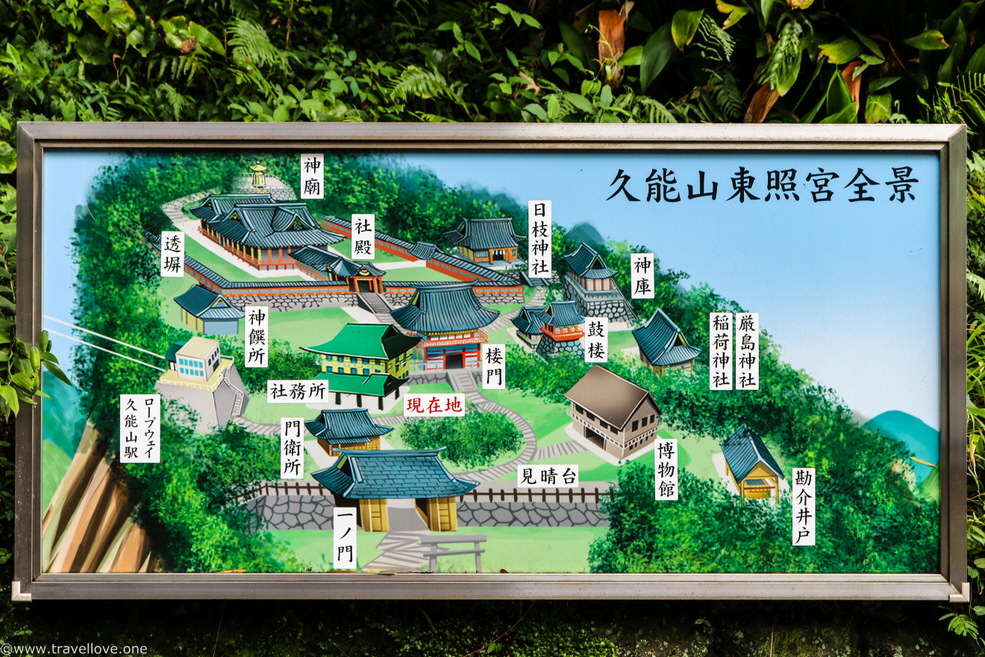
Below the first gate of the complex, Koji gave us some explanations on the history of Ieyasu and the complex. He wasn’t only equipped with the respective footage, but also with a little microphone/speaker attached to his shirt, so we all could hear him very well.
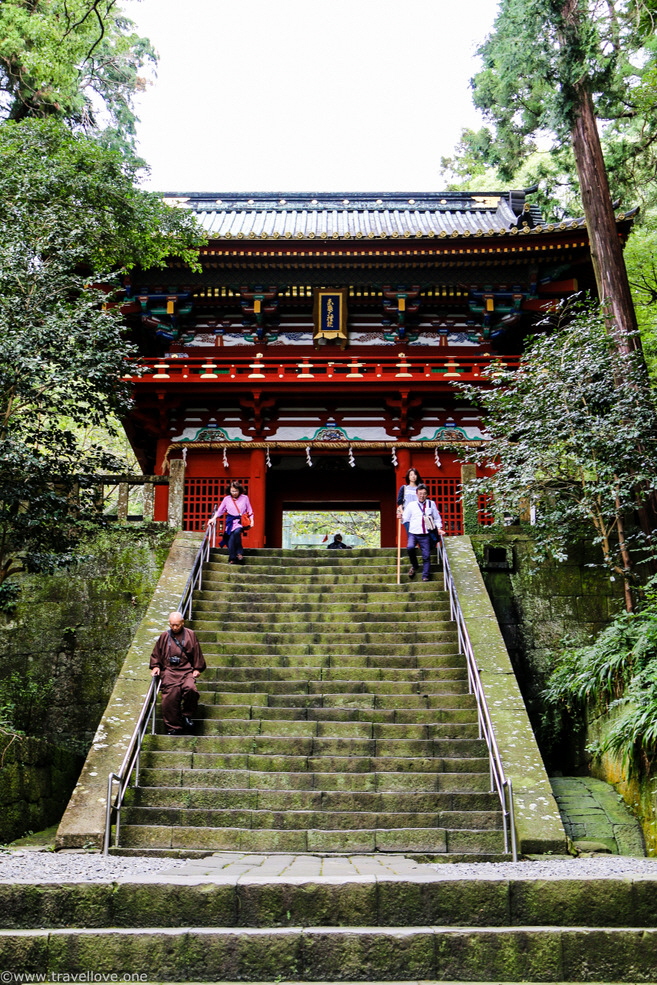
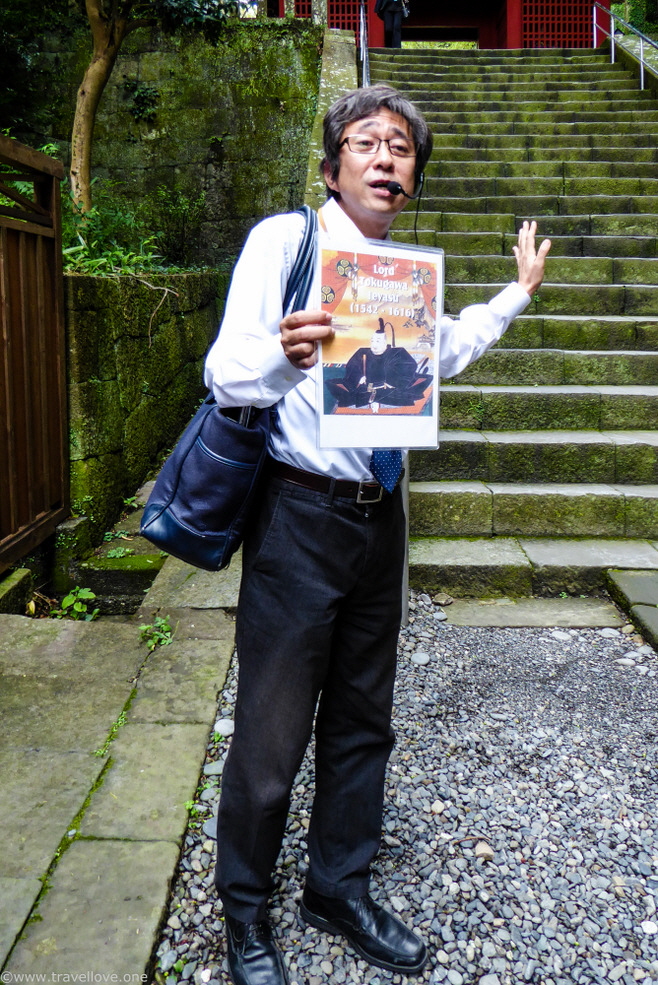
After the first explanations we climbed the steep steps and admired the elaborate details of the gate shining in intense colors. The entire complex had been renovated for its 400th anniversary, from which we were benefiting now.
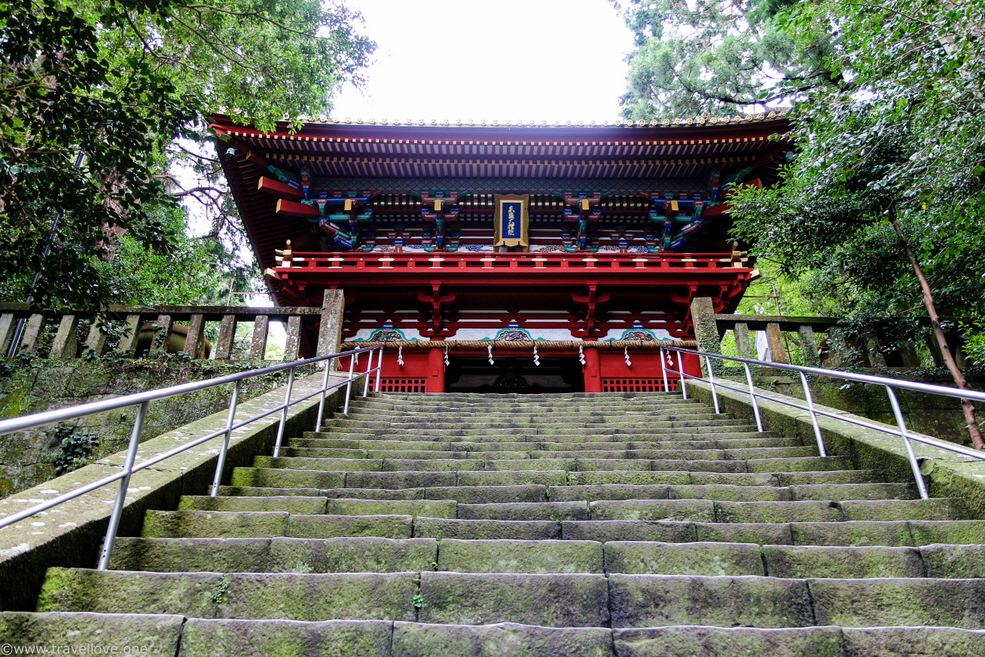
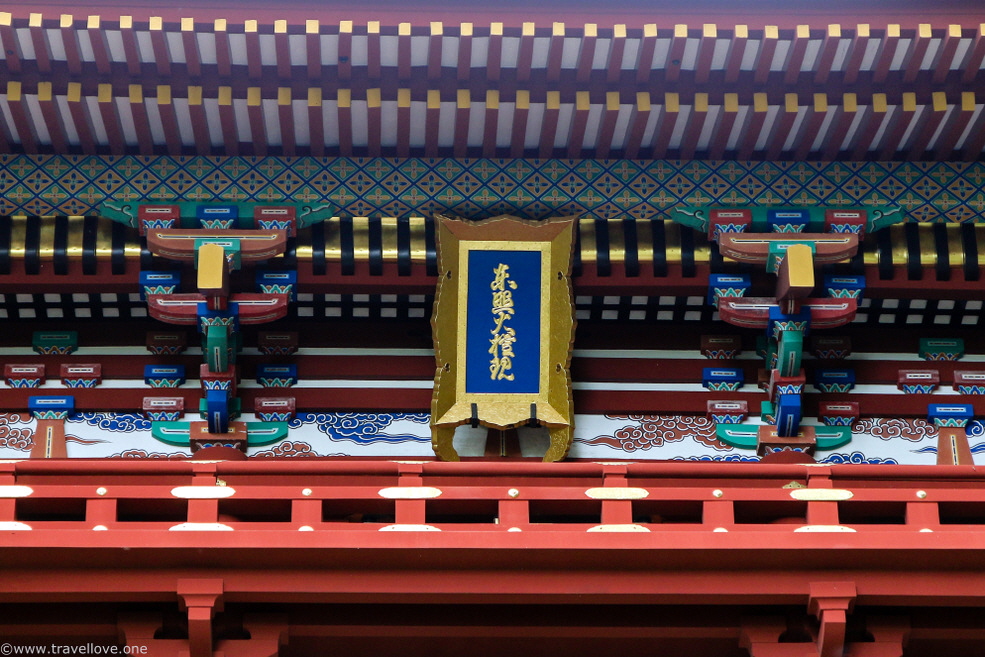
Through the gate we reached a second level, from which a further stairway led to another torii. At the base of this stairway we stopped at a cleansing well as could be found in front of each temple and shrine, where Koji explained the cleansing ritual again.
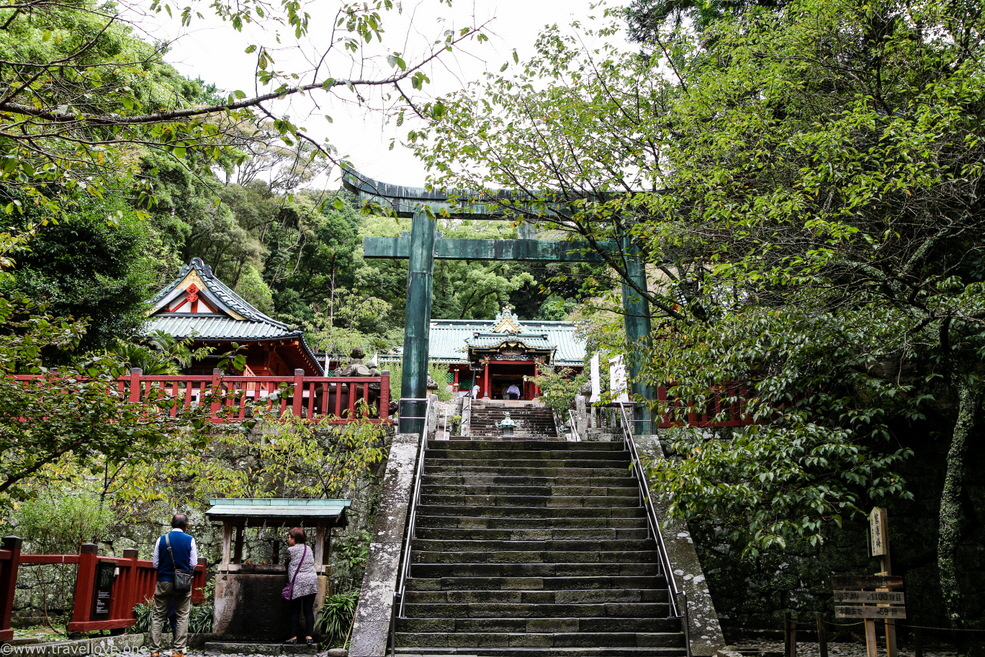
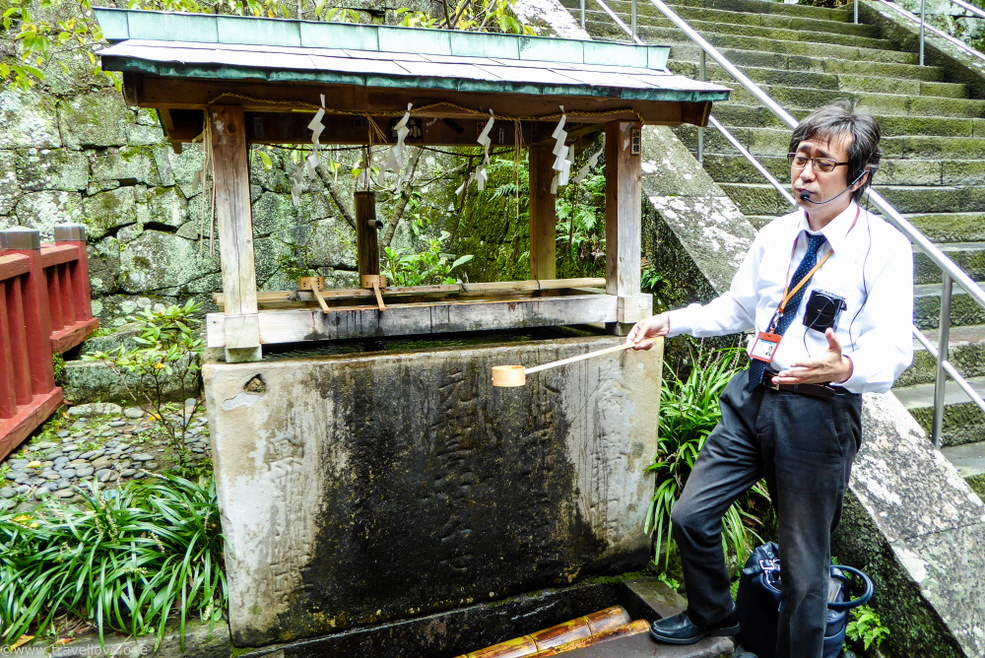
The mossy stone sculptures and walls of the next two levels were mystical and beautiful at once.
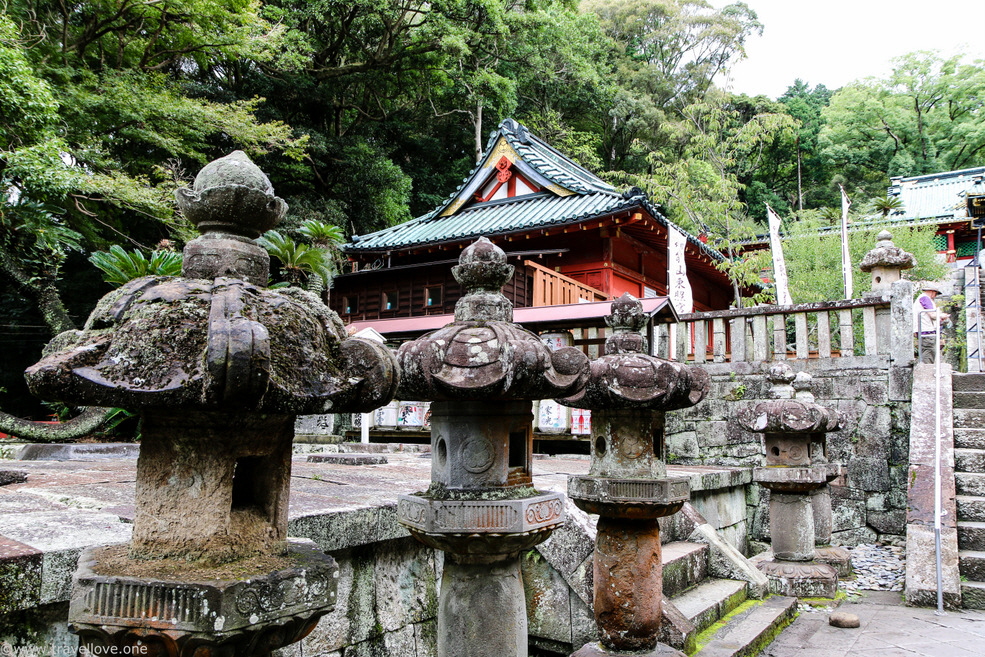
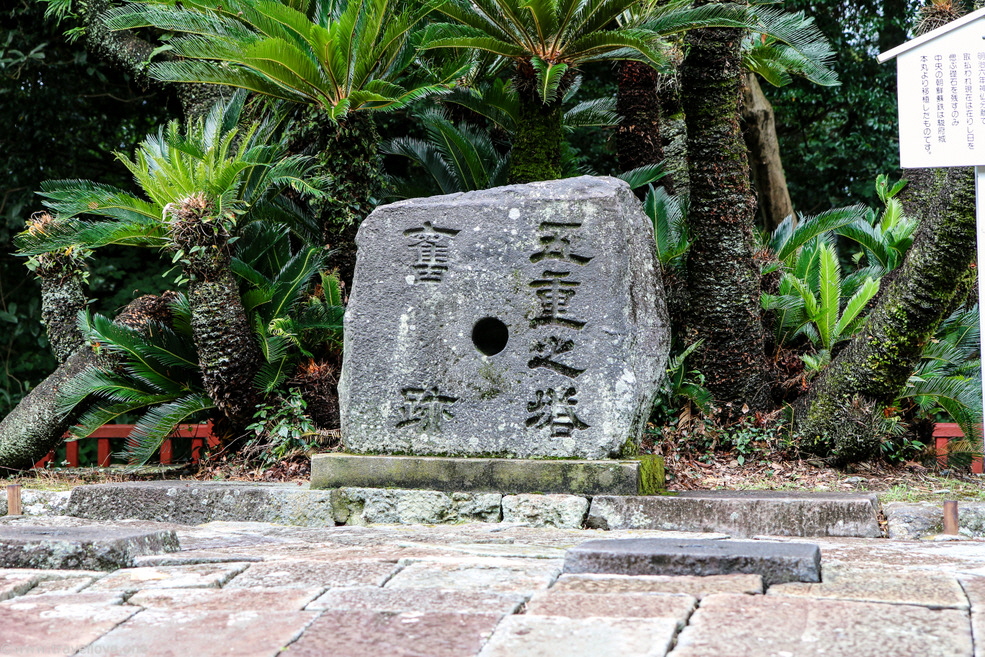
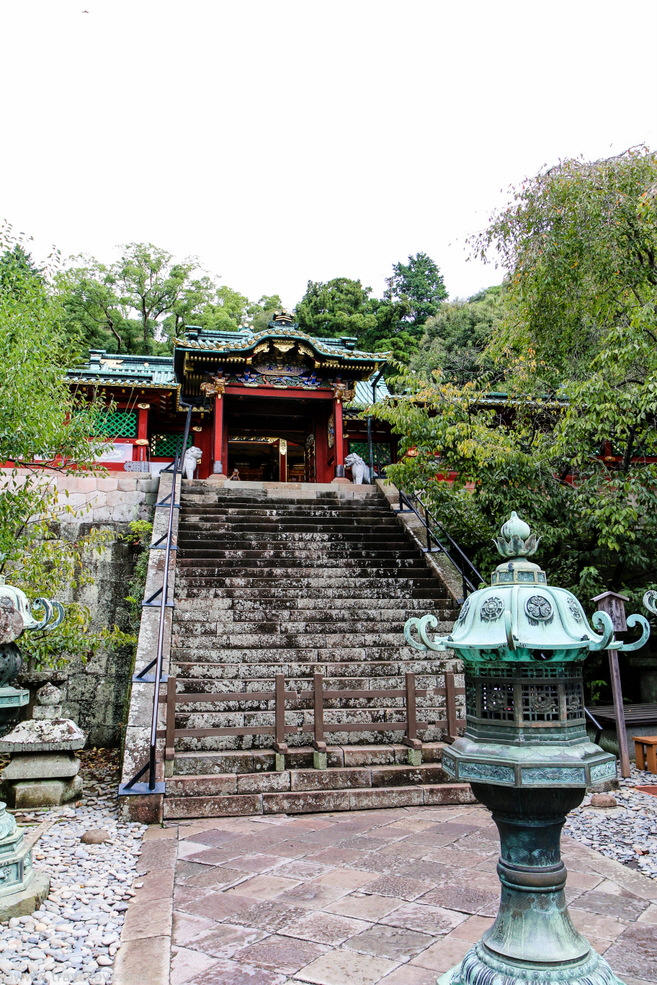
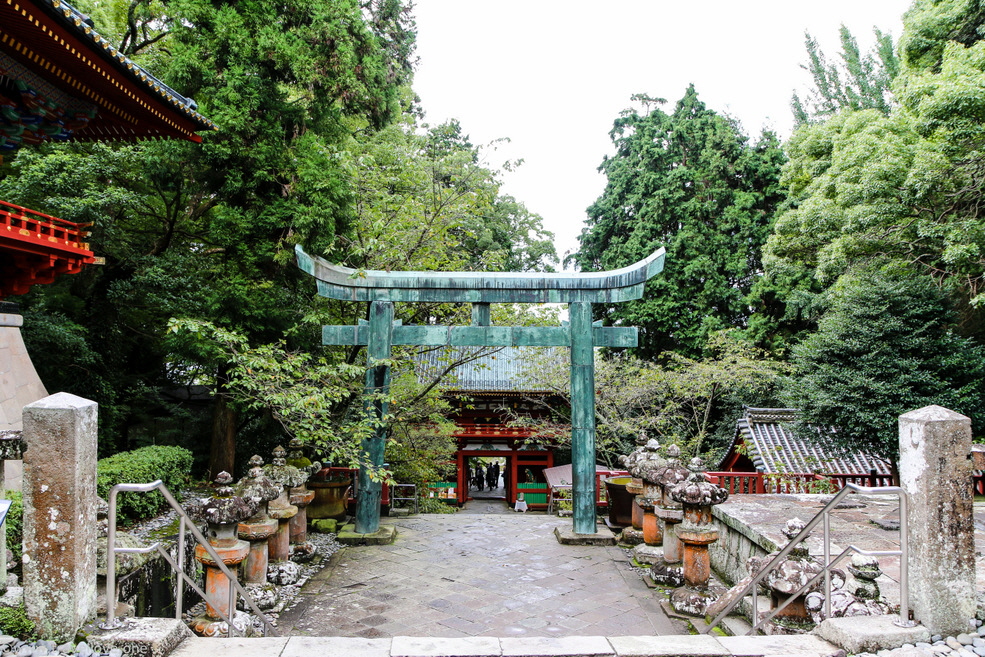
On the next level we reached “Haiden and Honden”, the main buildings of the shrine. Again, Koji explained in very good English the details of the halls adorned in gold leaf.
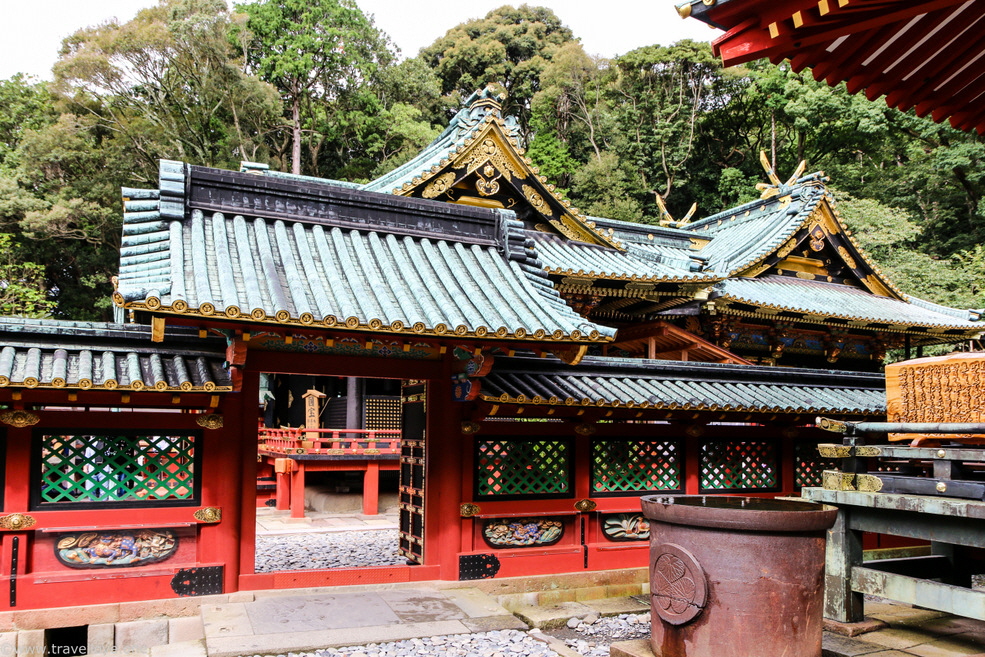
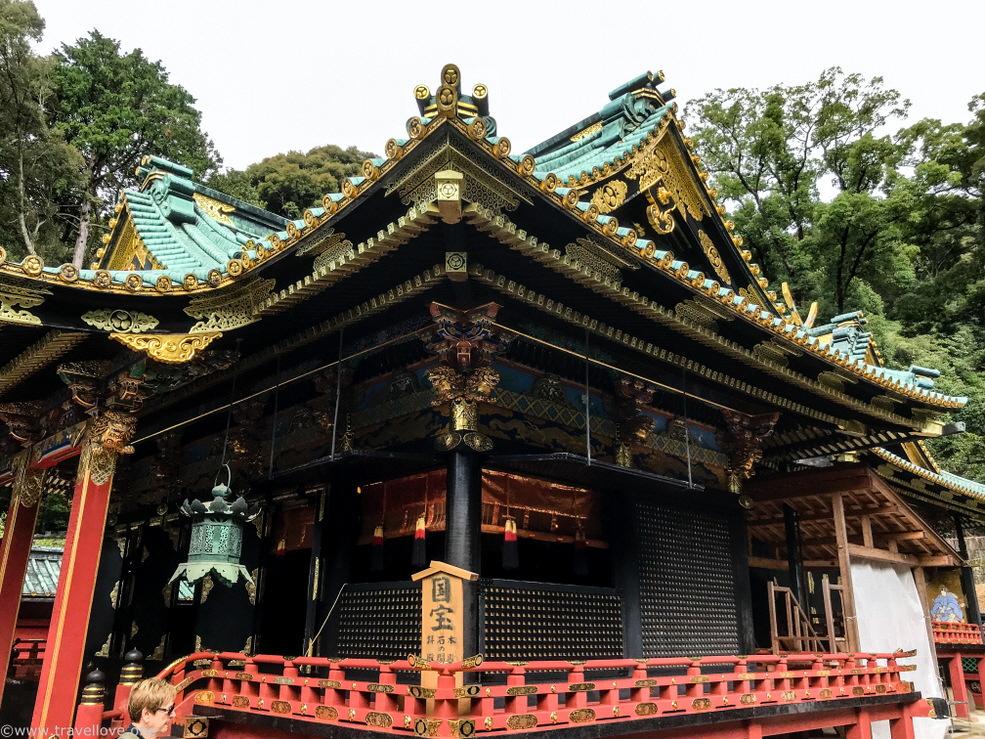
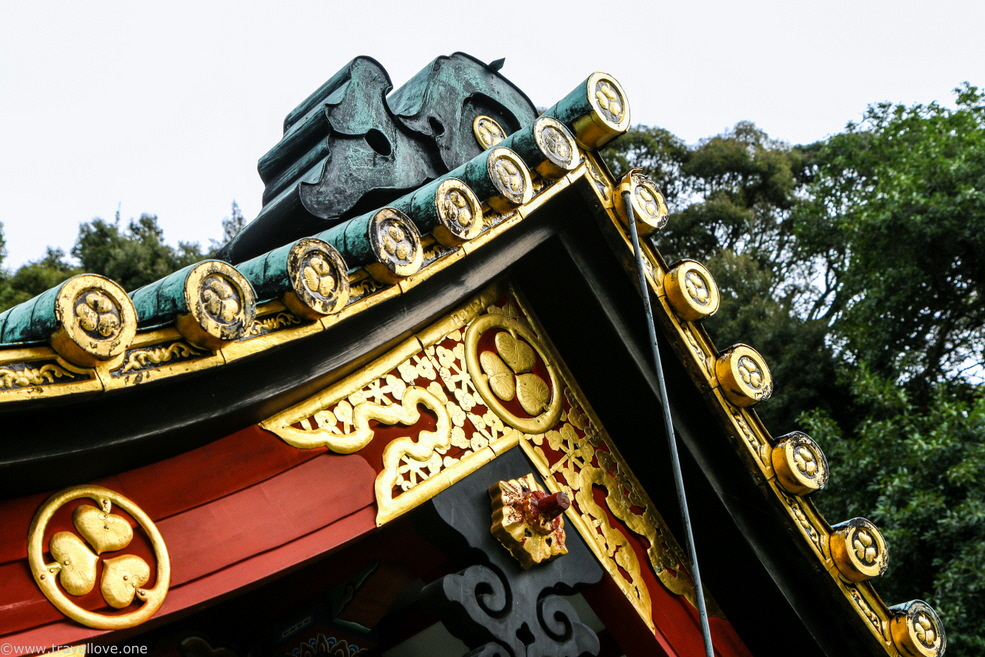
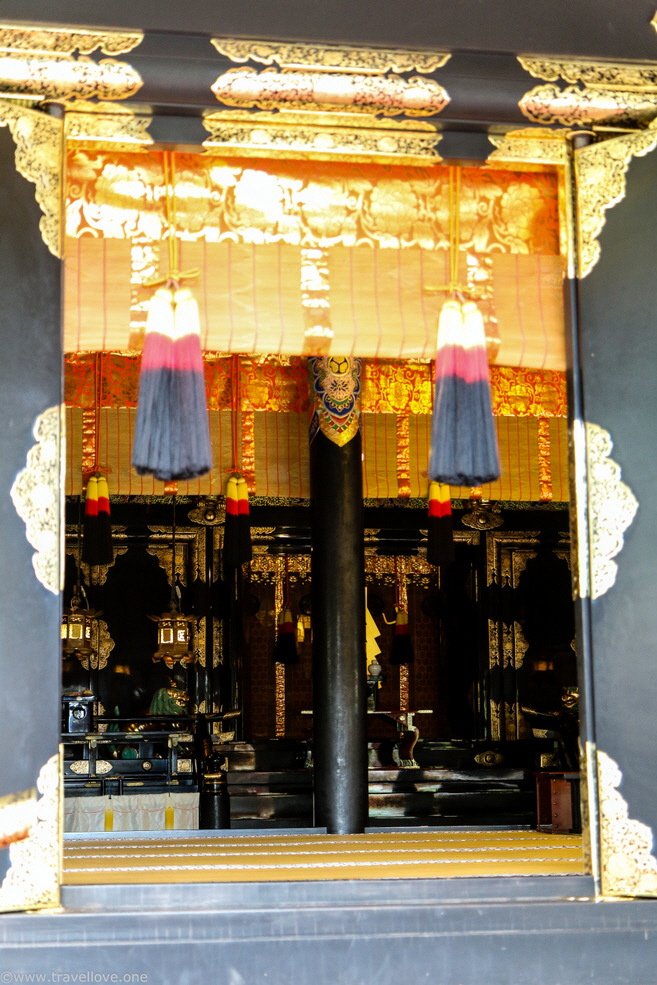
As in Tokyo, there was a wall where visitors could leave their wishes on little wooden boards.
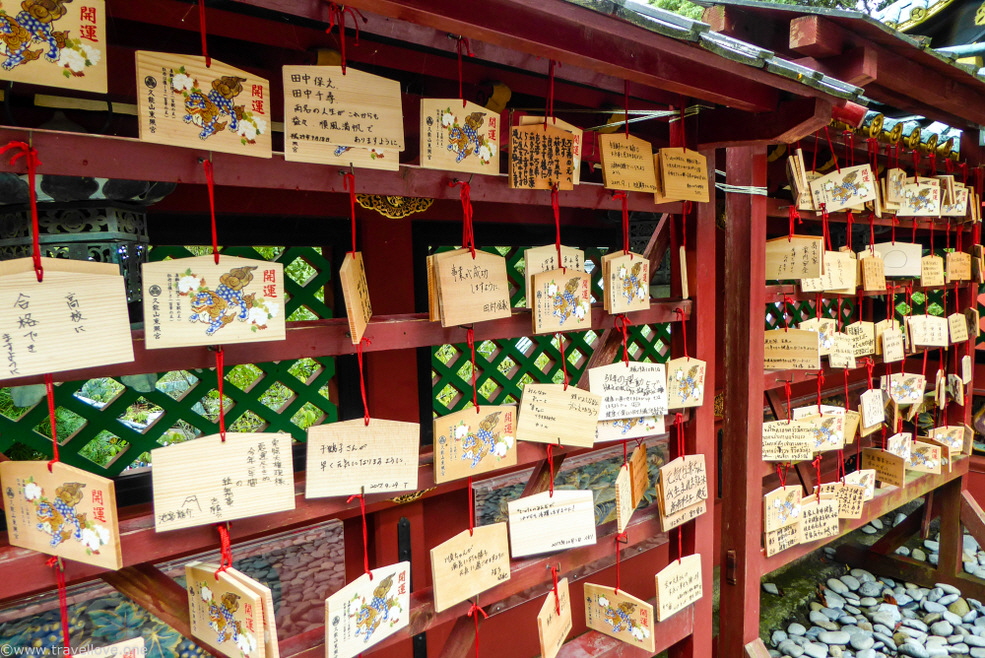
Throughout the buildings the Tokugawa coat of arms – three mallow leaves in a circle – could be found in different sizes.
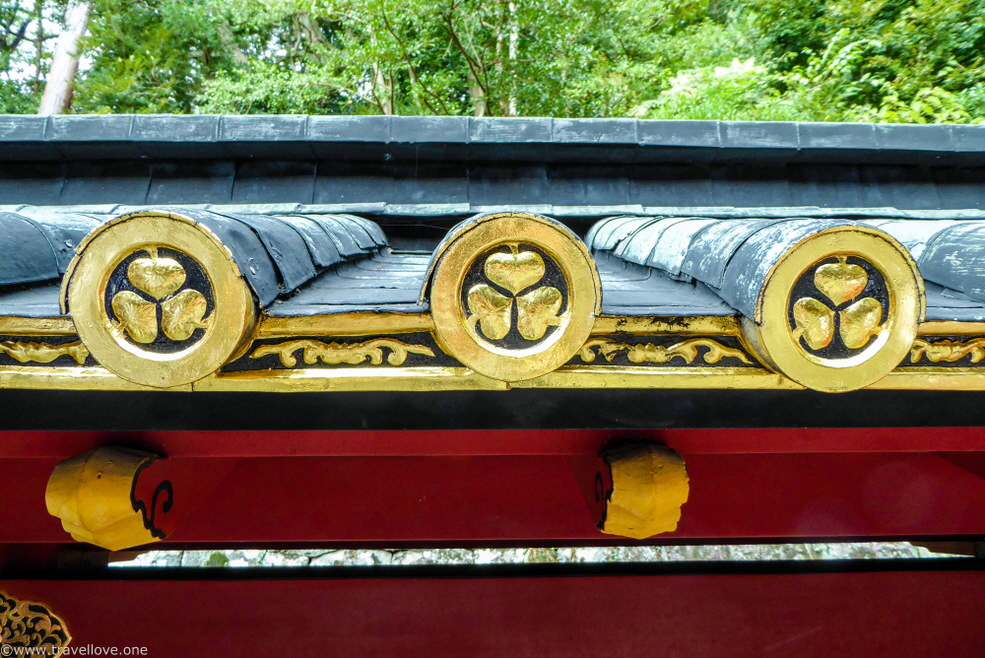
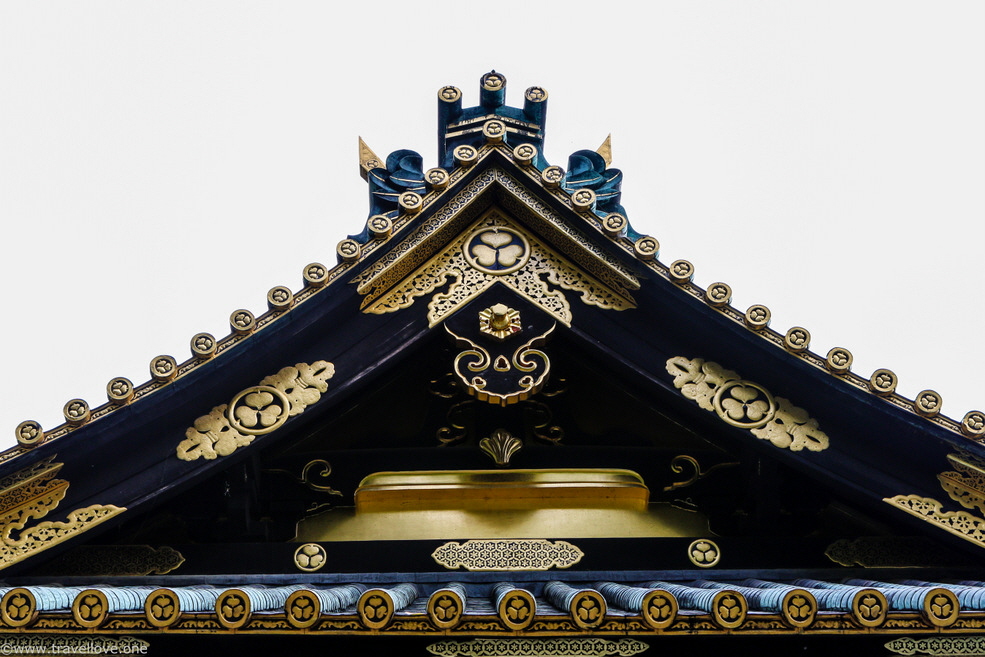
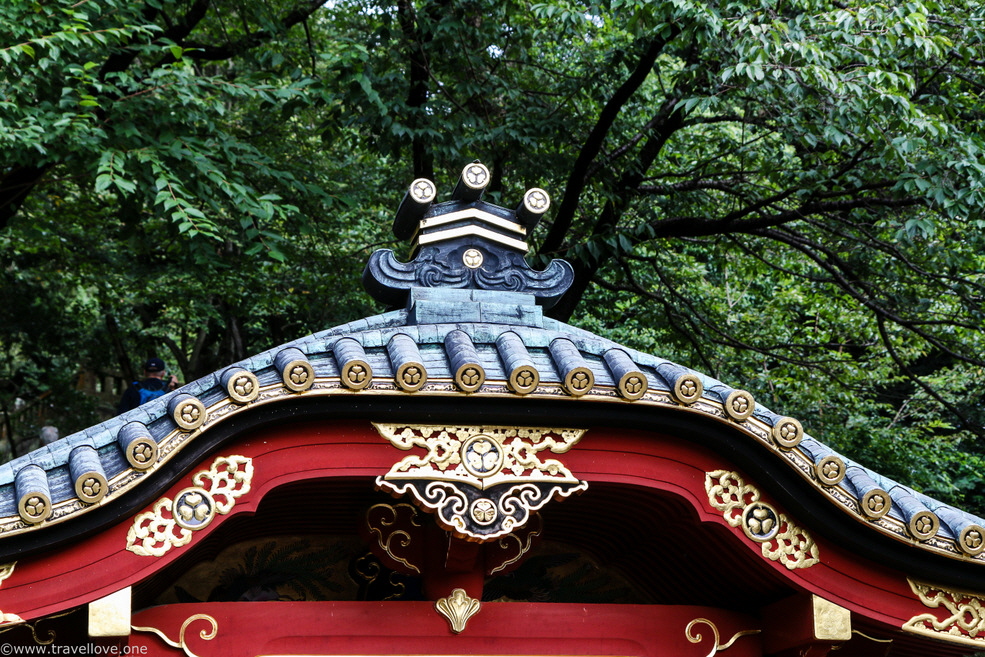
We couldn’t get enough of the extremely well preserved and renovated details. The carvings were delicate and filigree, and the colors strong and vivid.
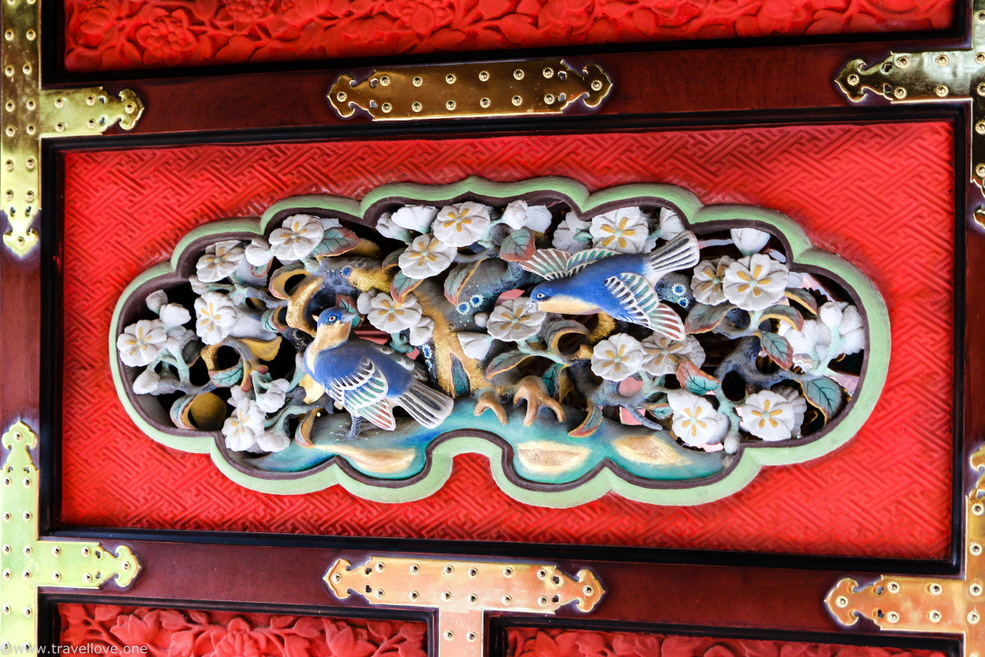
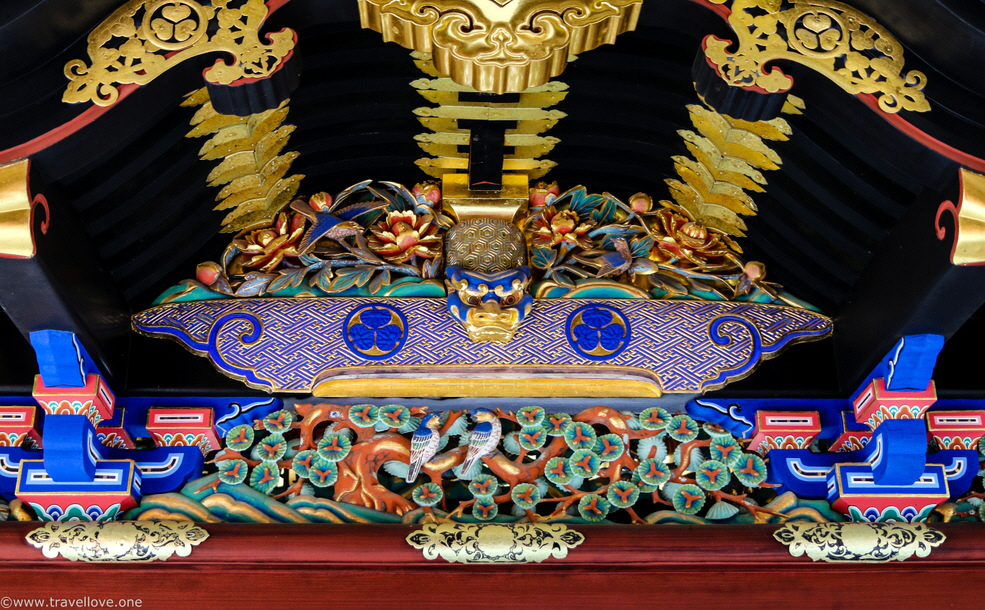
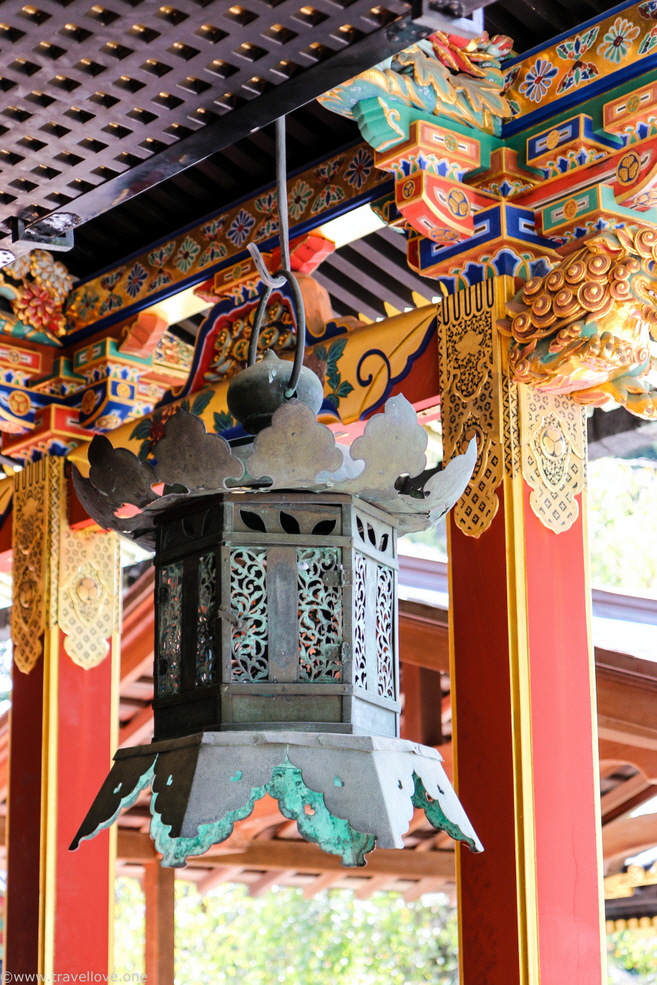
The view of the lower levels was not too bad either.
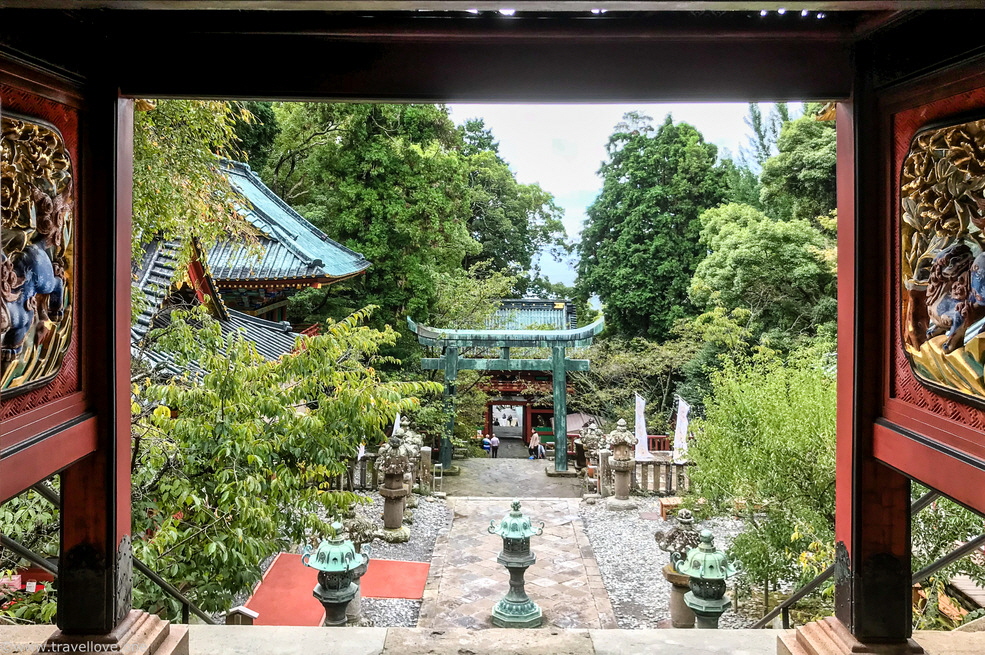
Koji helped us a lot to understand the symbolism of the ornate reliefs and sculptures as well as the legends behind them by imparting his comprehensive knowledge with the help of his panels.
Many of the figures, paintings and sculptures symbolize the peace that Ieyasu had longed for during his lifetime and which was only granted to him after death, when he had united Japan in may wars and battles.
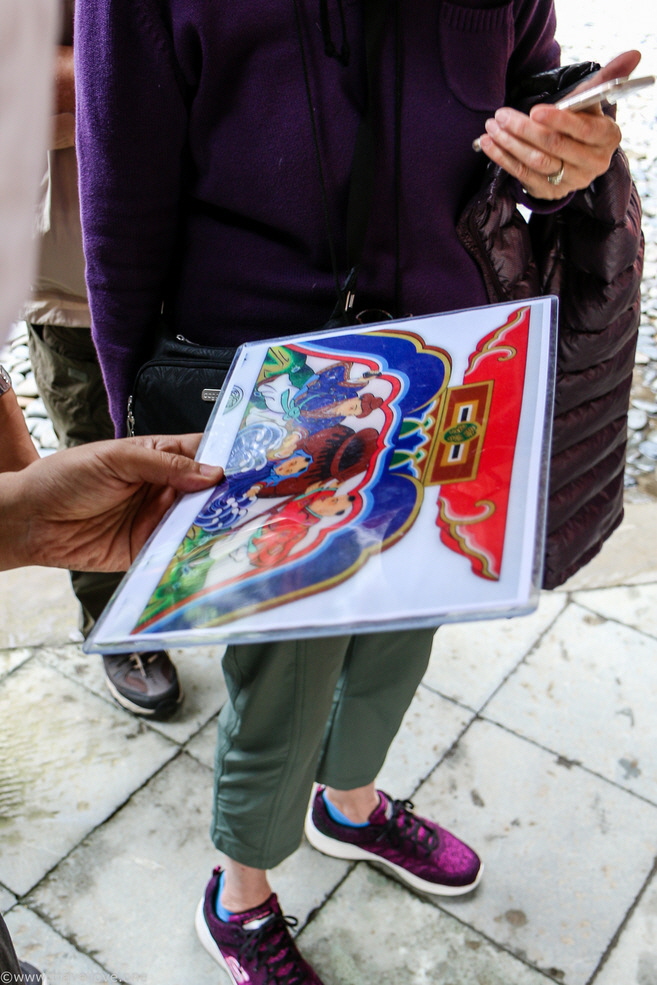
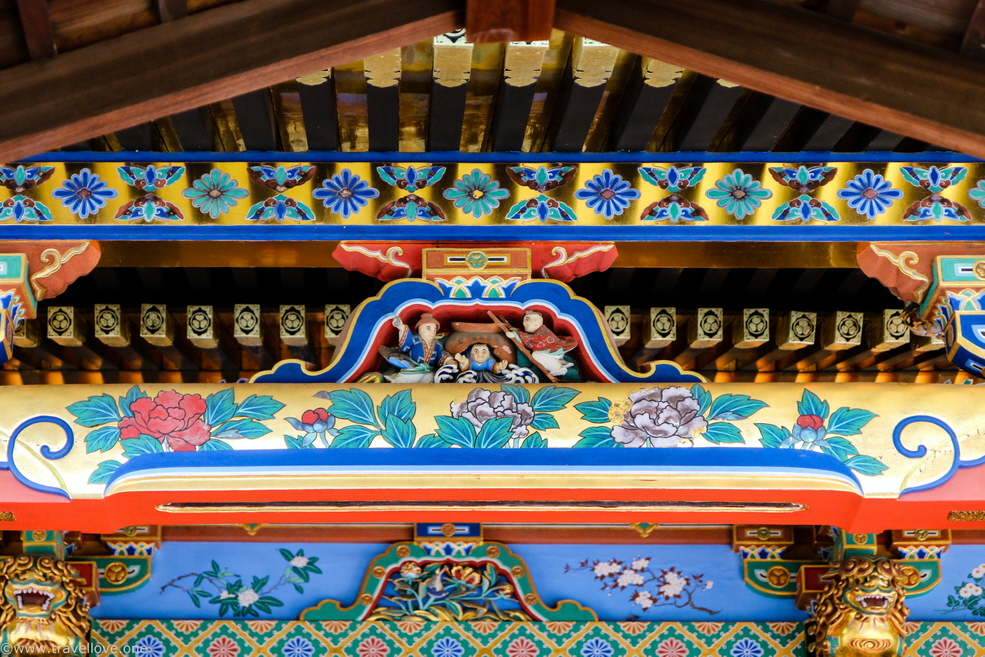
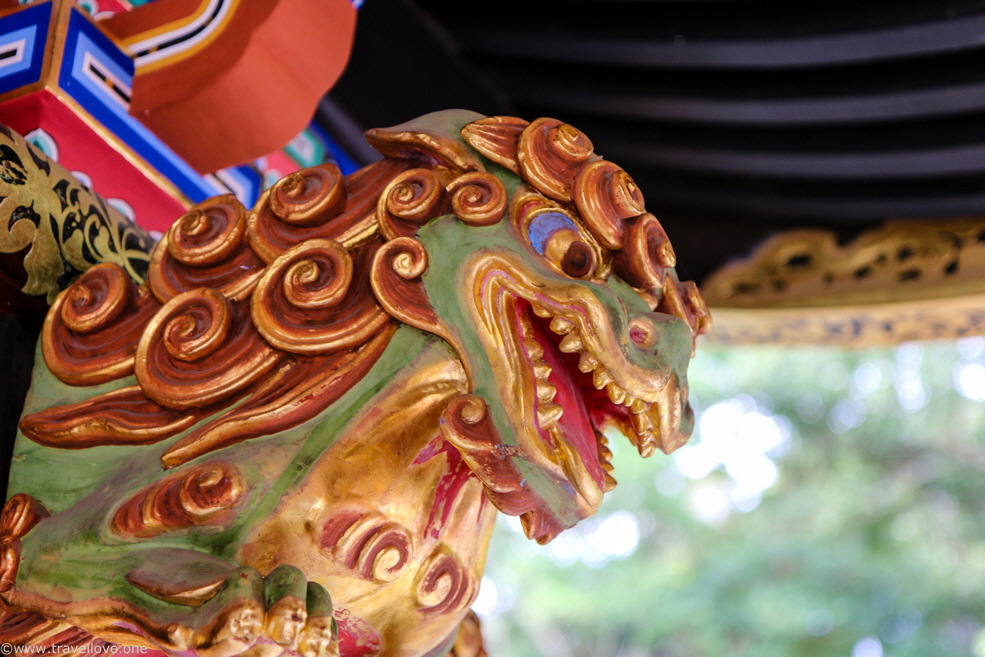
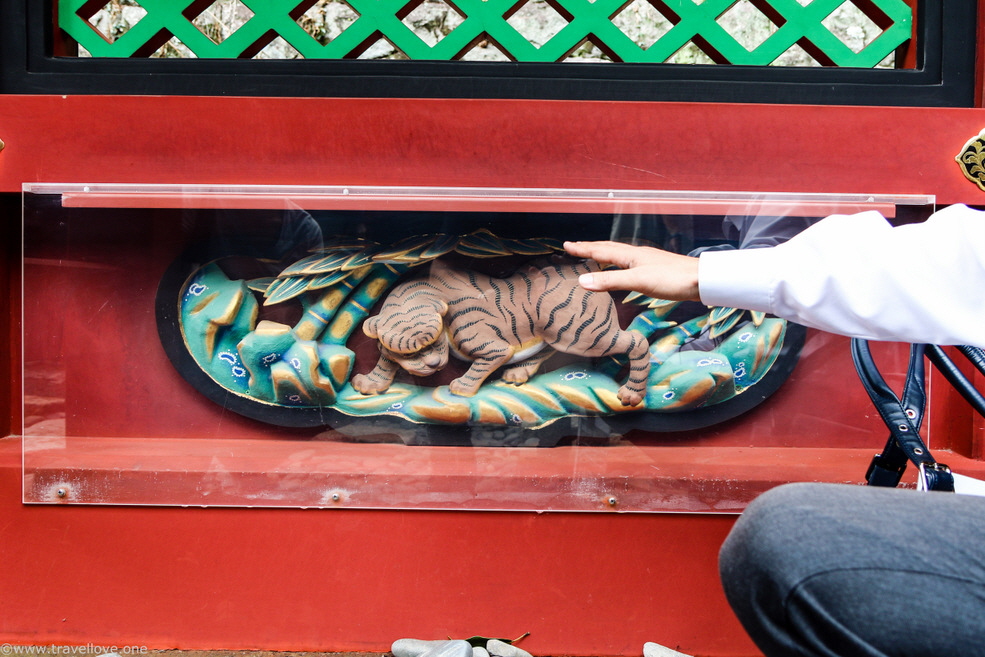
At the side of the hall we found an image of Ieyasu and other mystical creatures. The intense colors and the shining gold on the deep black background were impressive.
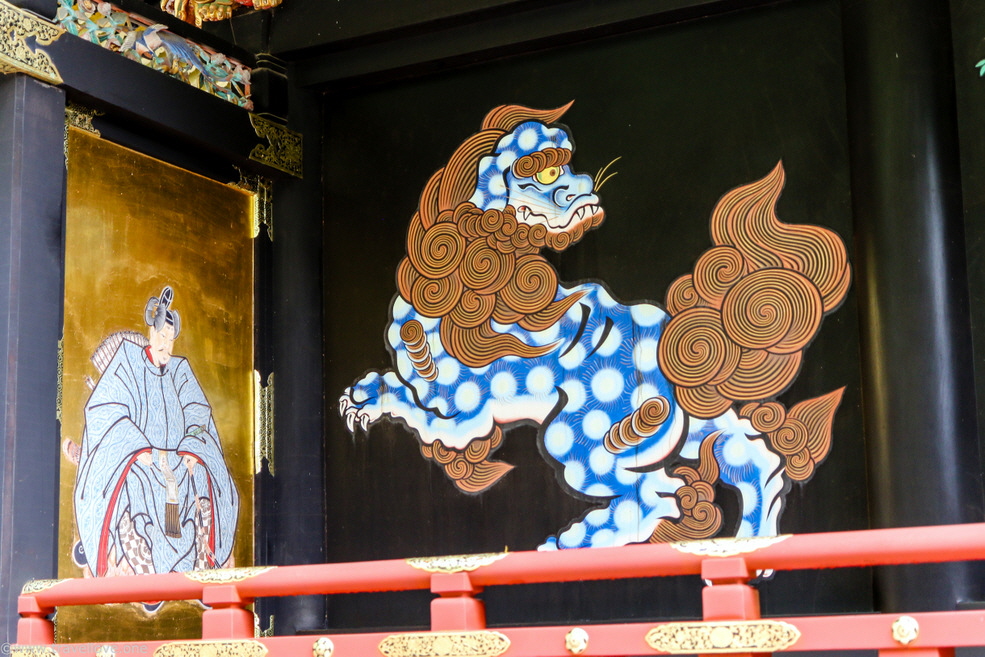
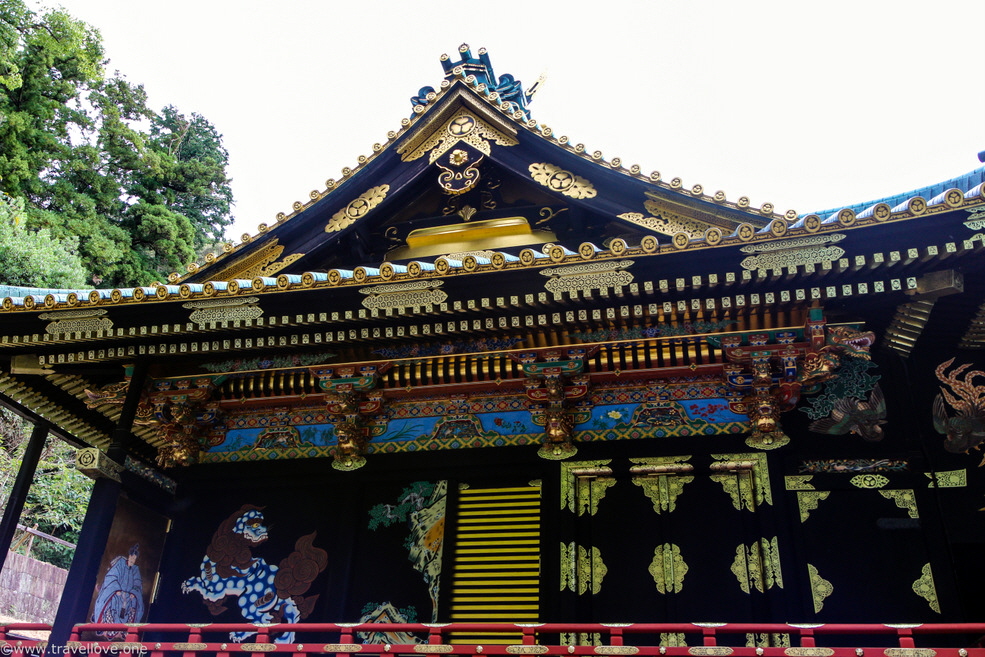
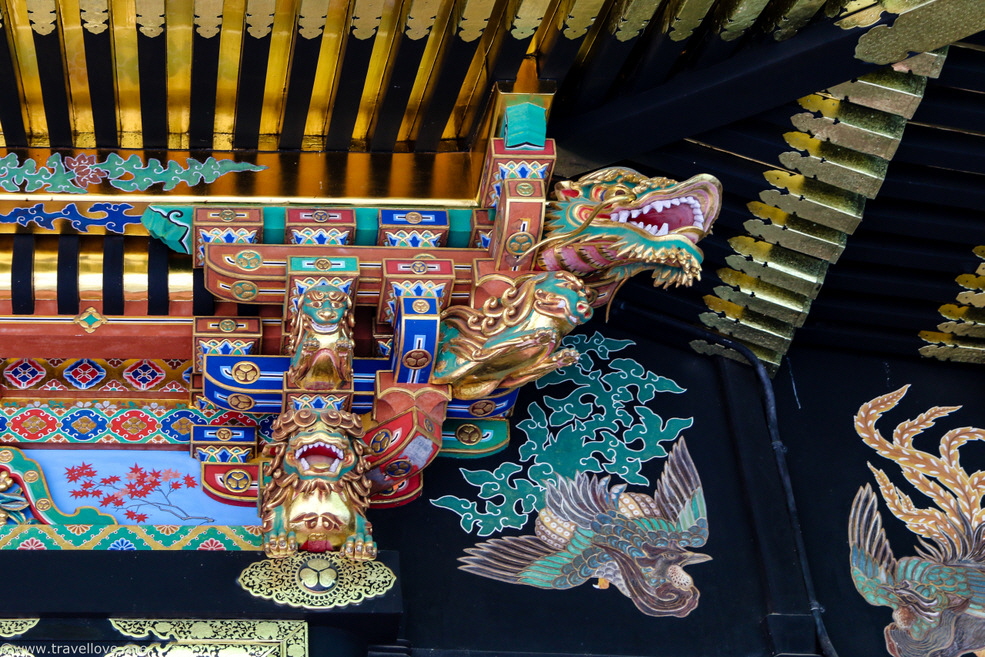
Through a stone torii we finally reached the last level with Tokugawa Ieyasu’s final resting place a little deeper in the woods. Compared to the radiant splendor of the previous complex, this part seemed rather simple – but thereby also somehow calm and peaceful.
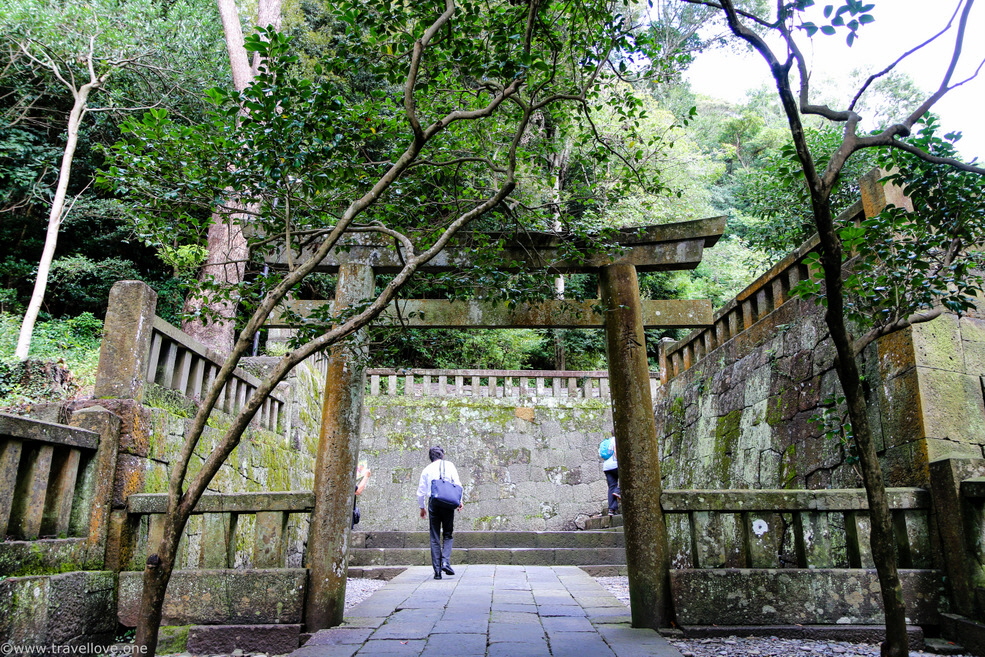
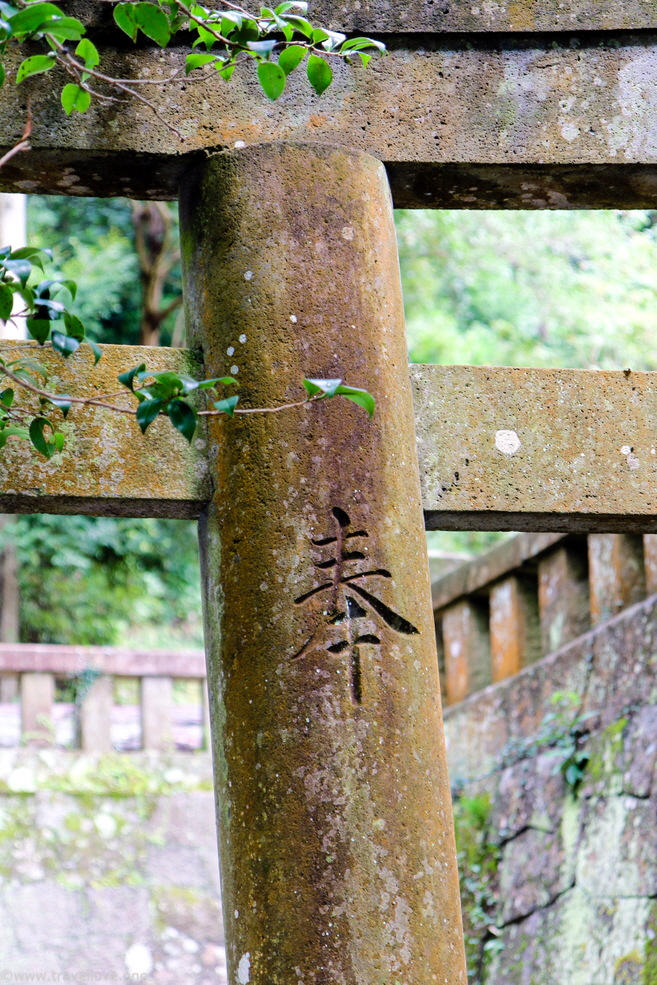
At first, Iyeasu found his eternal rest in a large urn. But later, his grandson Iemitsu relocated his remains to the Nikko Toshogu Temple. It is said that only his soul still resides here on Mount Kuno, the place he had once chosen for himself.
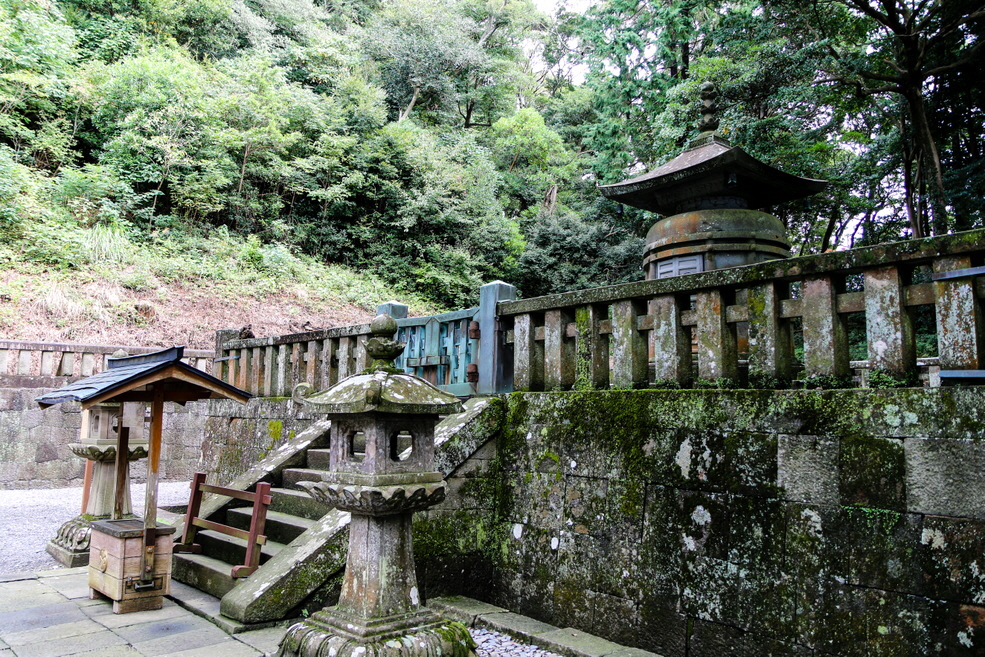
During our visit, the sun had found its way through the clouds. Here, in this upper part of the area, it now shone through the dense green roof of leaves and dipped the stone lanterns in an interesting light. A little further down, the sunlight was reflected on the black lacquered roofs.
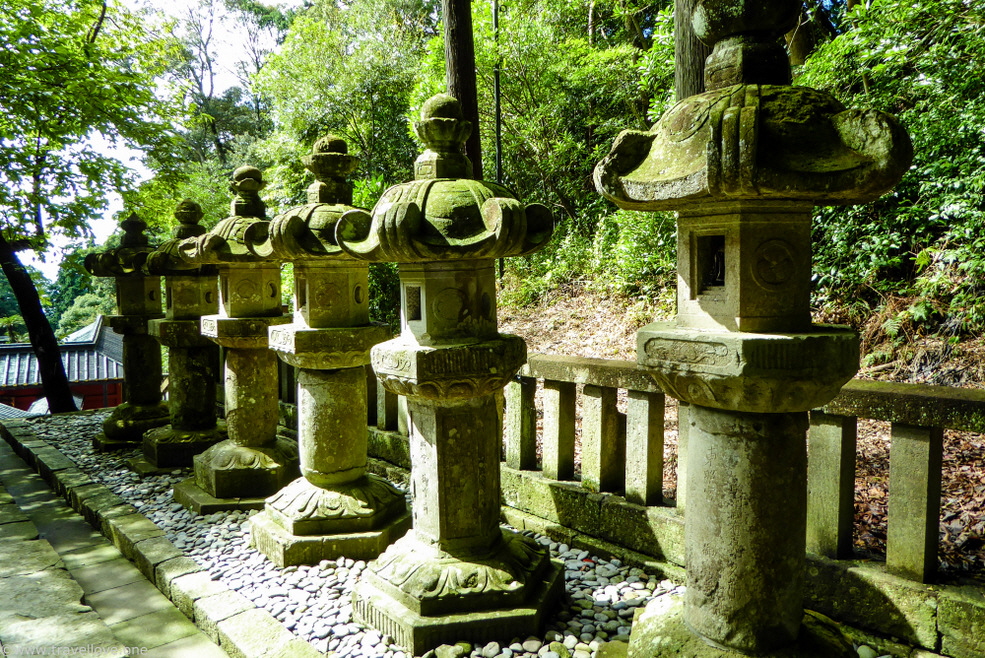
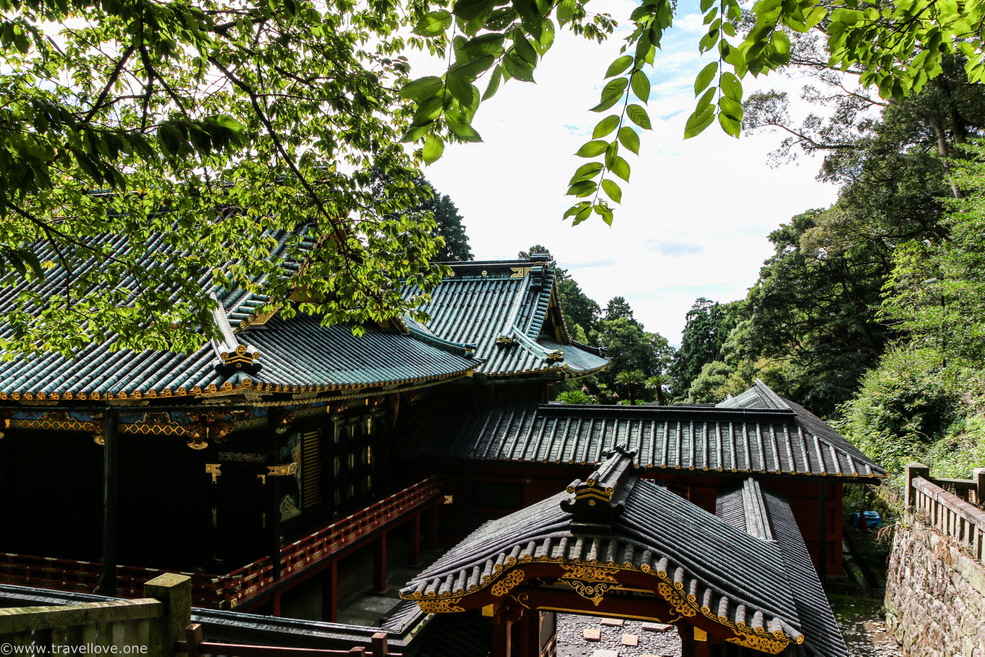
Everything we had already admired on our way up now radiated even more and literally appeared in a different light.
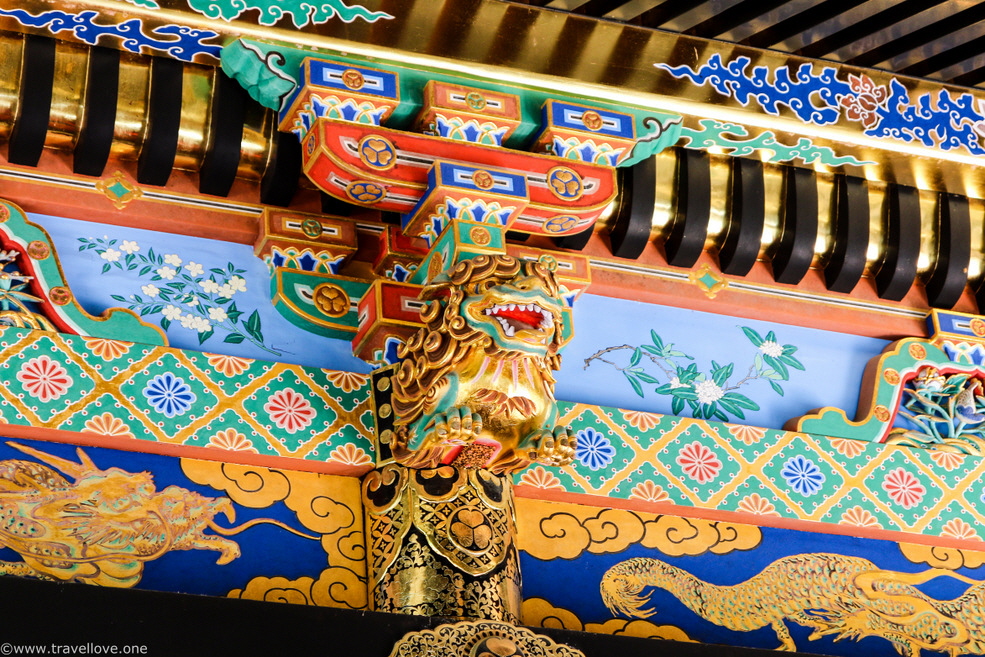
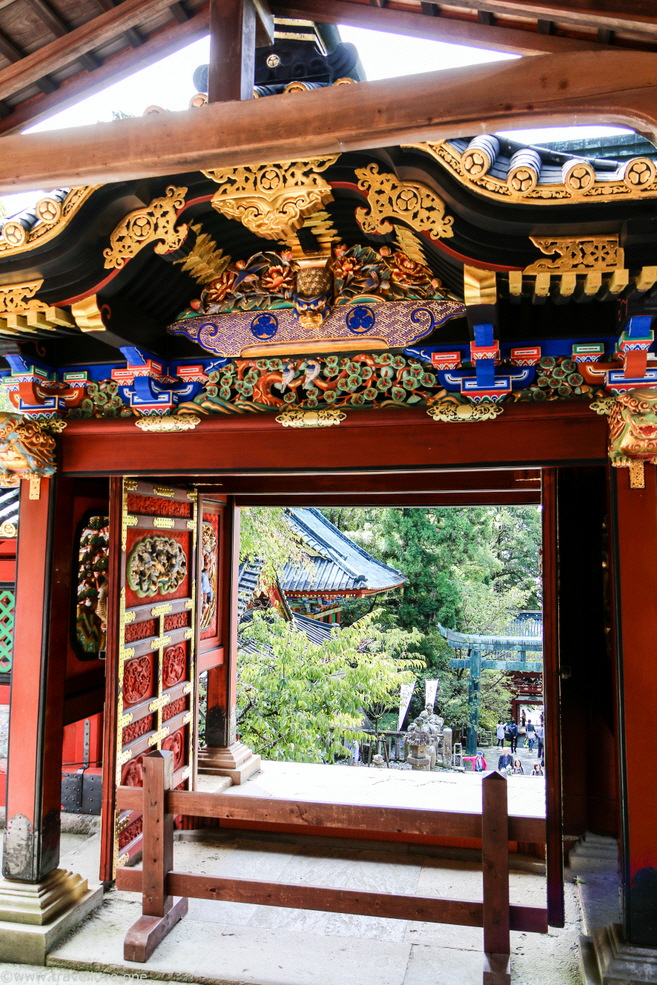
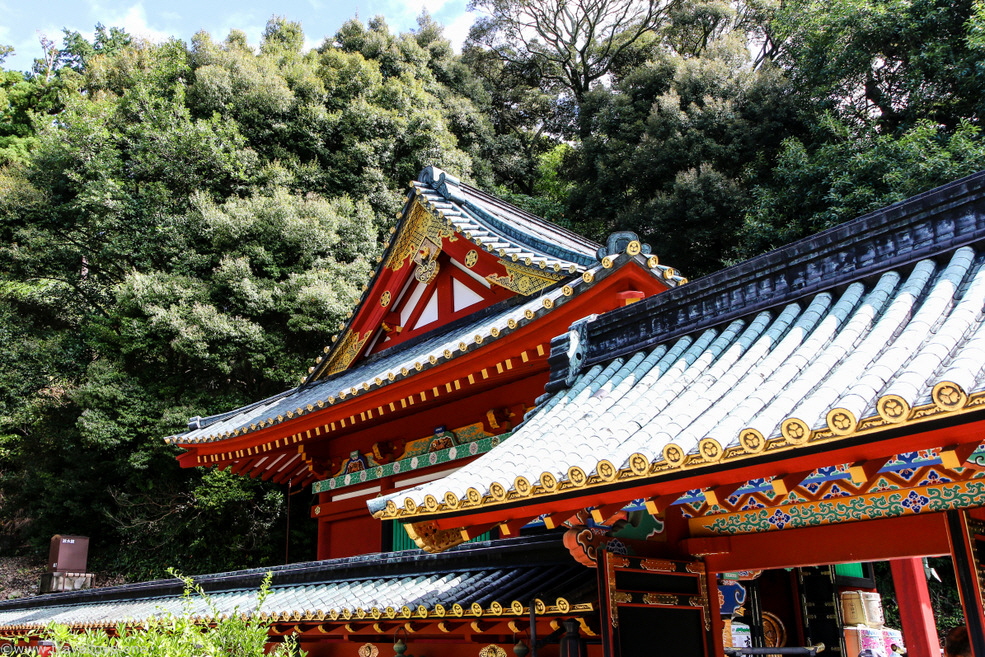
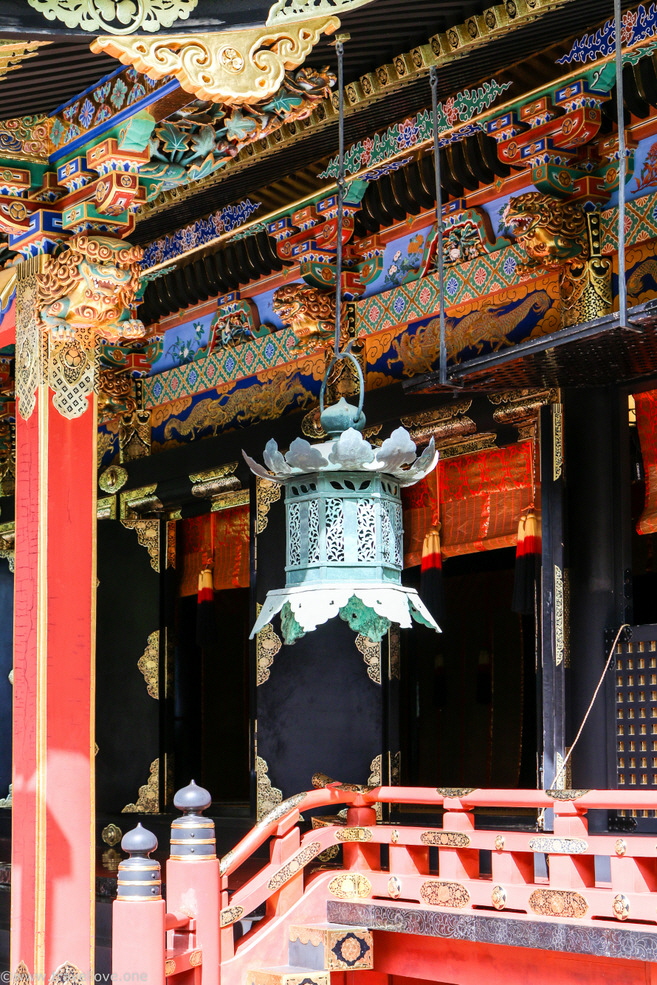
If at all possible, the halls shining in the sun against the green of the woods looked even more impressive than before.
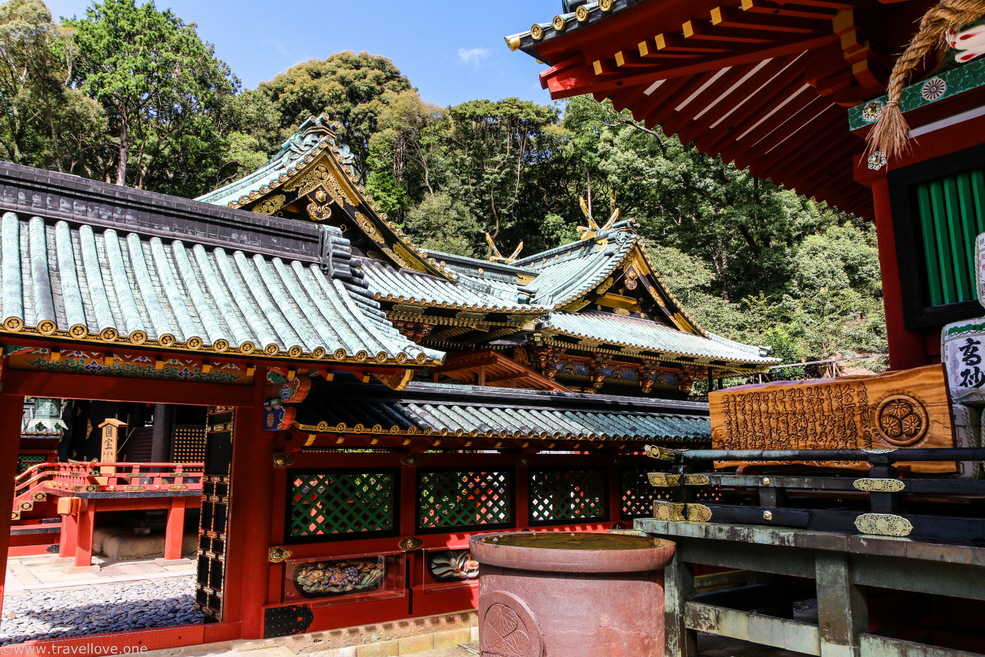
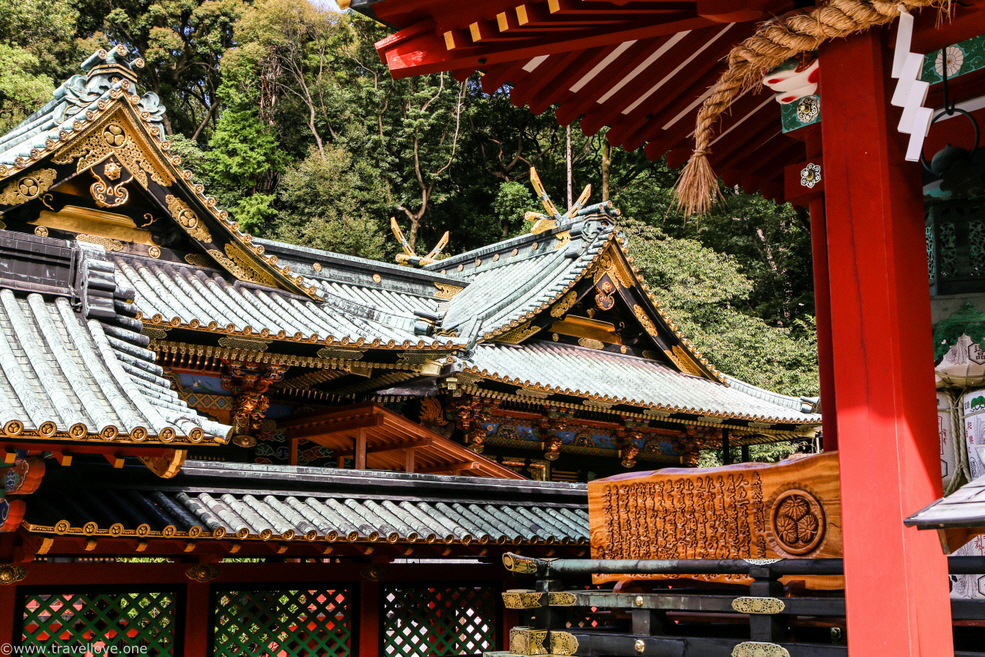
Even if it’s a repeat of pictures, I don’t want to keep the photos of the temple sections now glowing in the sun from you.
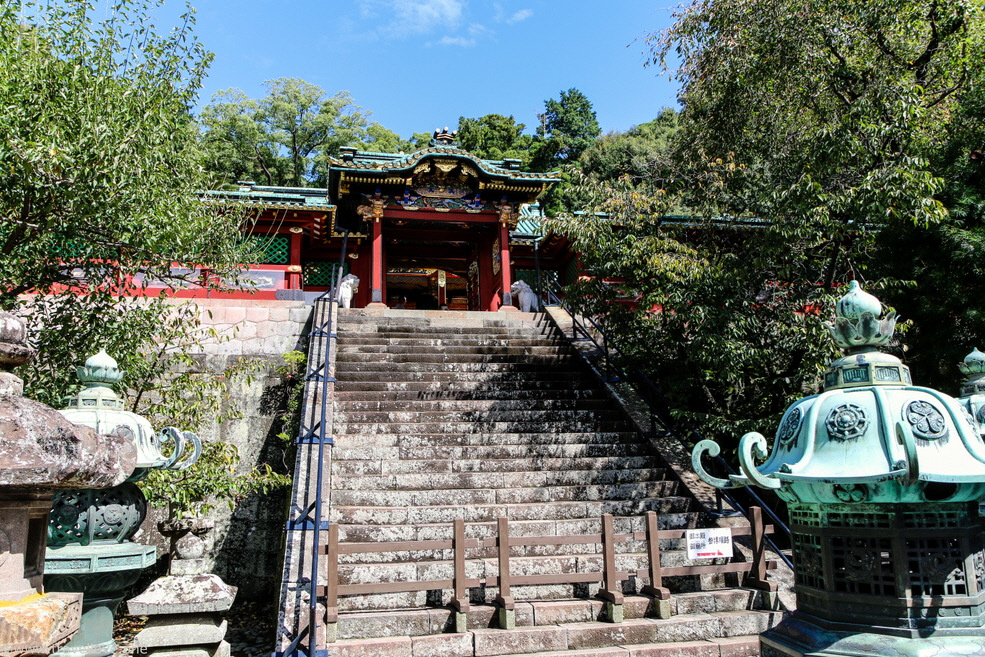
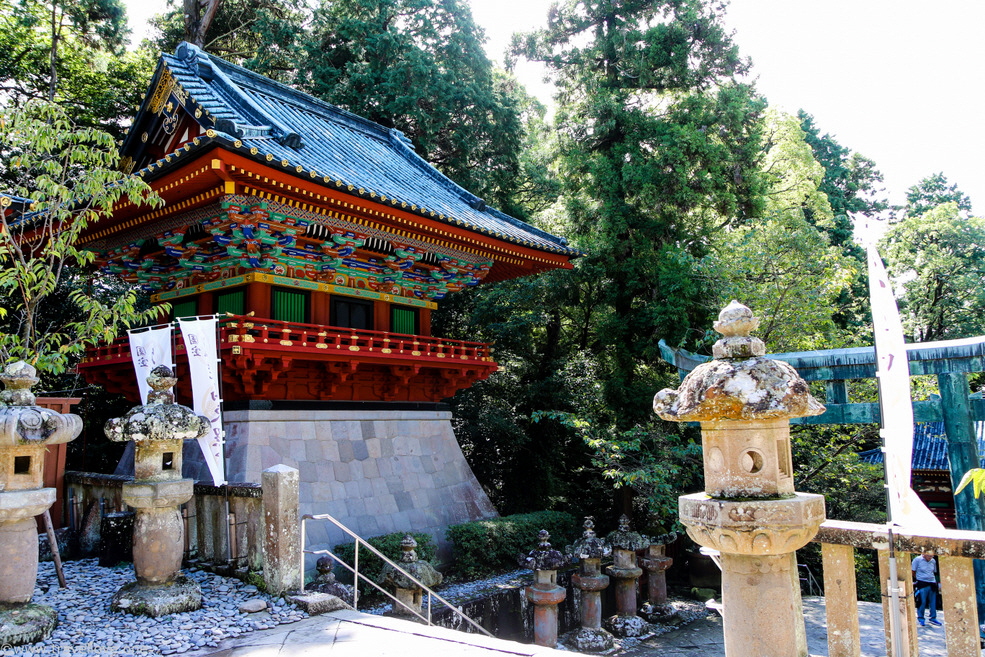
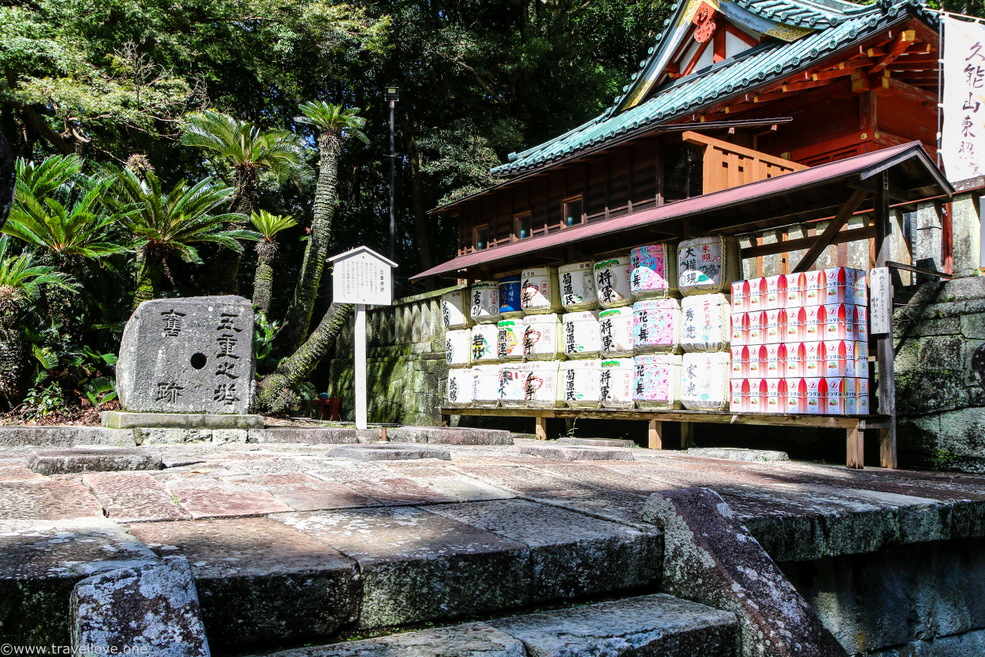
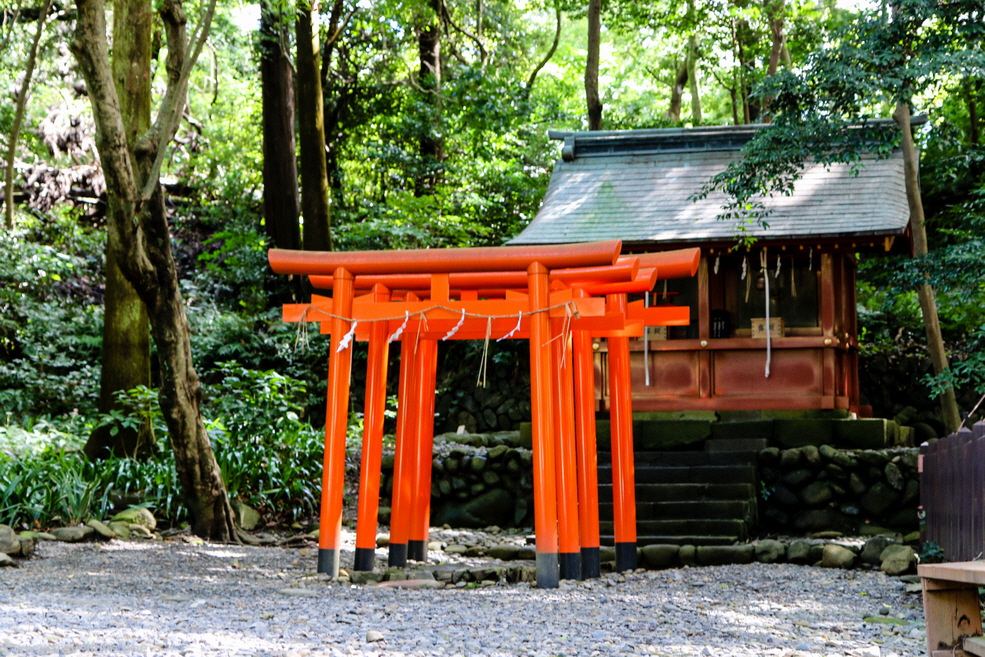
At the exit, Koji let us choose whether we wanted to visit the museum of the shrine or a lookout towards the other side of the mountain. We decided on the lookout and went there via the steps which were some hundred years old.
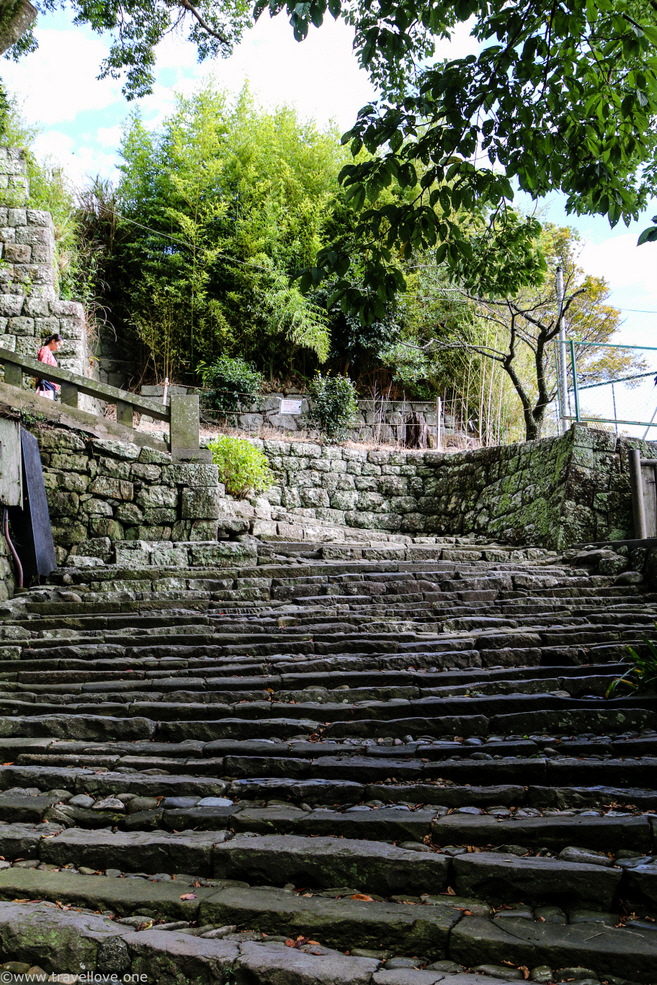
Behind a wooden entrance, Koji explained that this was the former main entrance of the shrine. It could only be reached via some 1,000 steps from the coastal town below. Even today, temple staff would take this route if they had to be at the shrine before the cable car opened. We were quite happy to have taken the cable car right away.
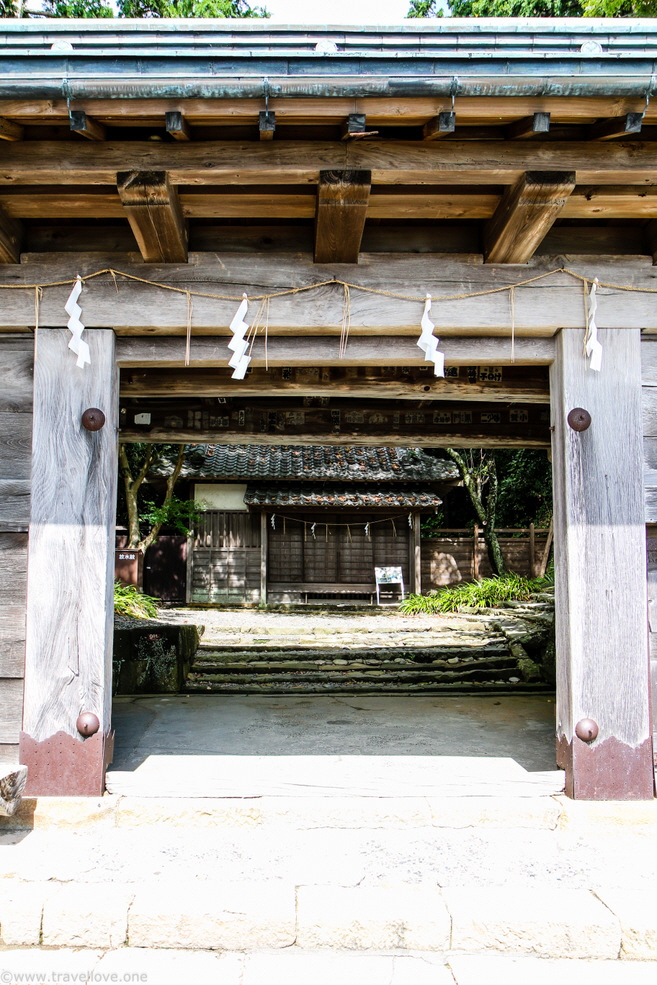
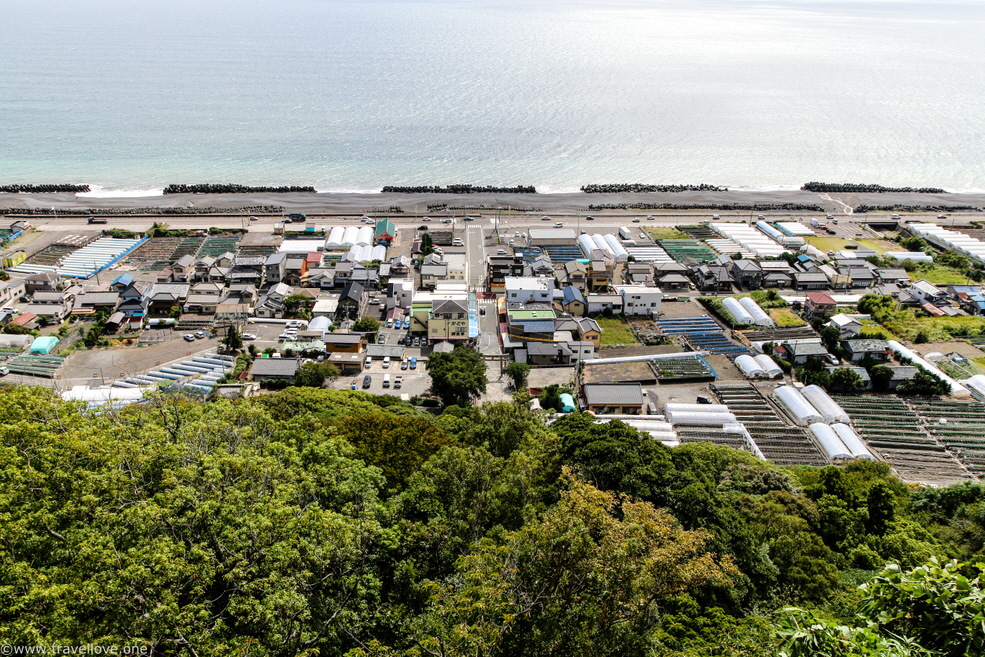
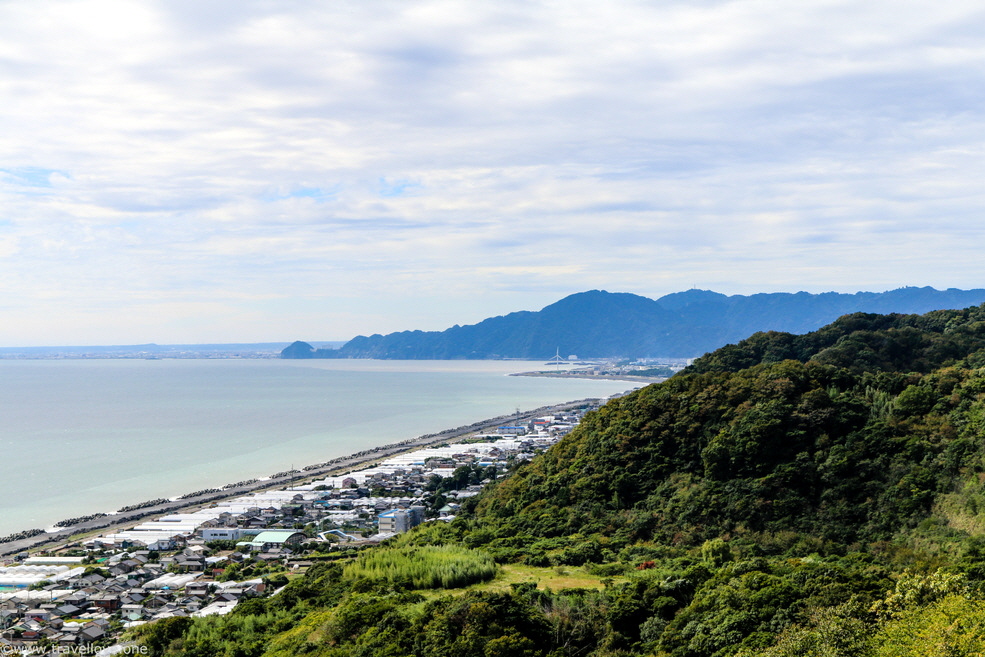
Luckily, we also took the cable car on our way back. We then went to the other side of the parking lot and followed a path to another viewpoint.
We couldn’t have been happier with the view. Fuji-san presented himself even more revealing than before.
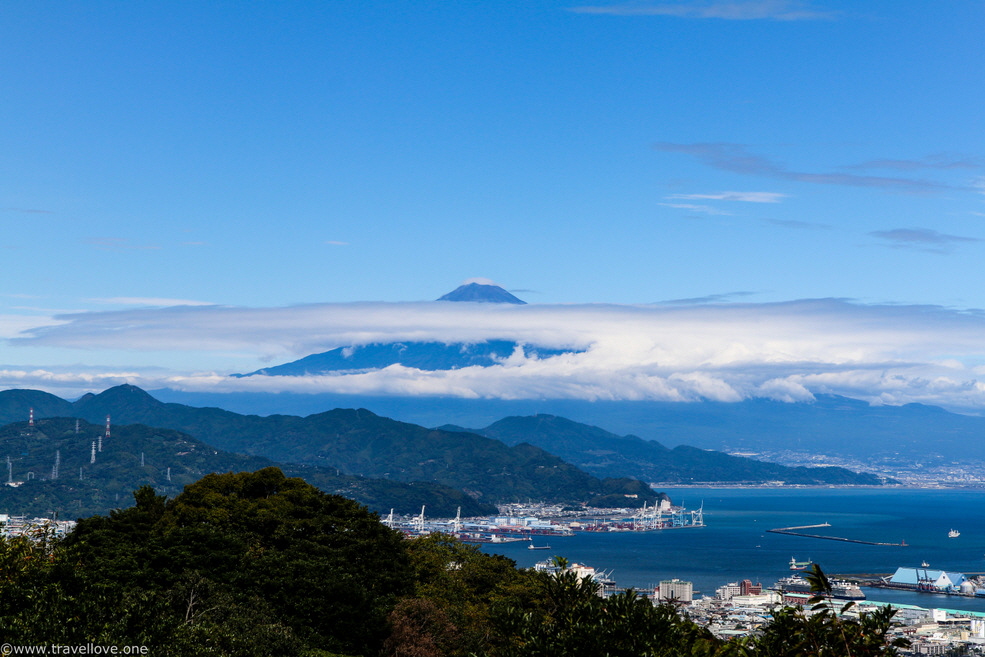
By the way, this was our small group of the day.
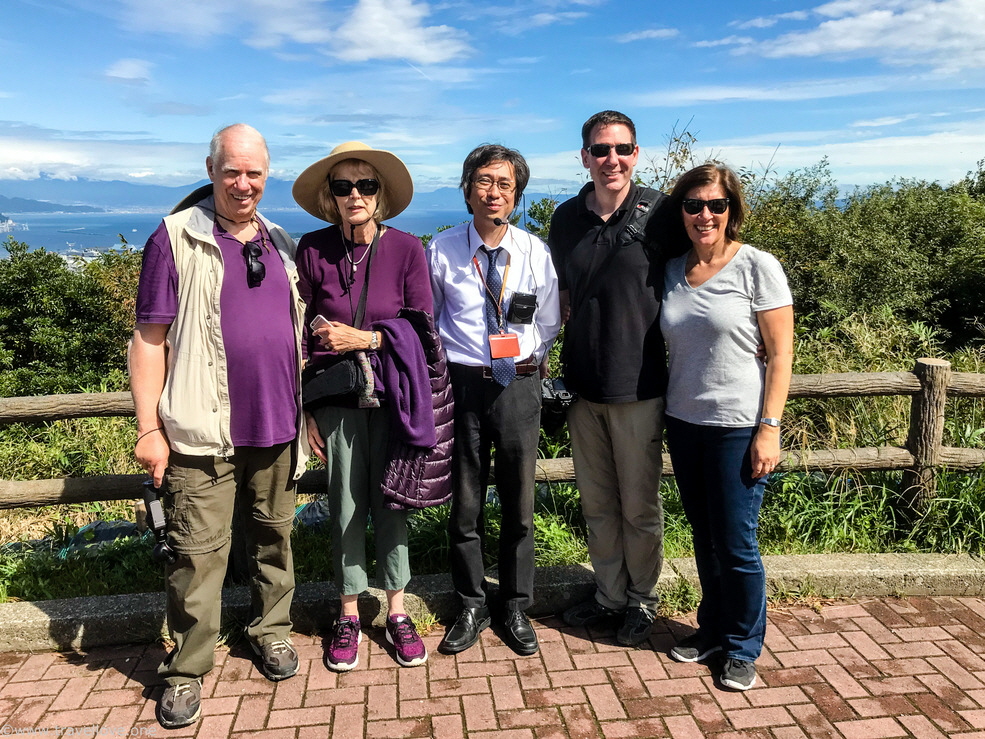
Koji then gave us the opportunity to take more photos from the garden behind the tea shop.
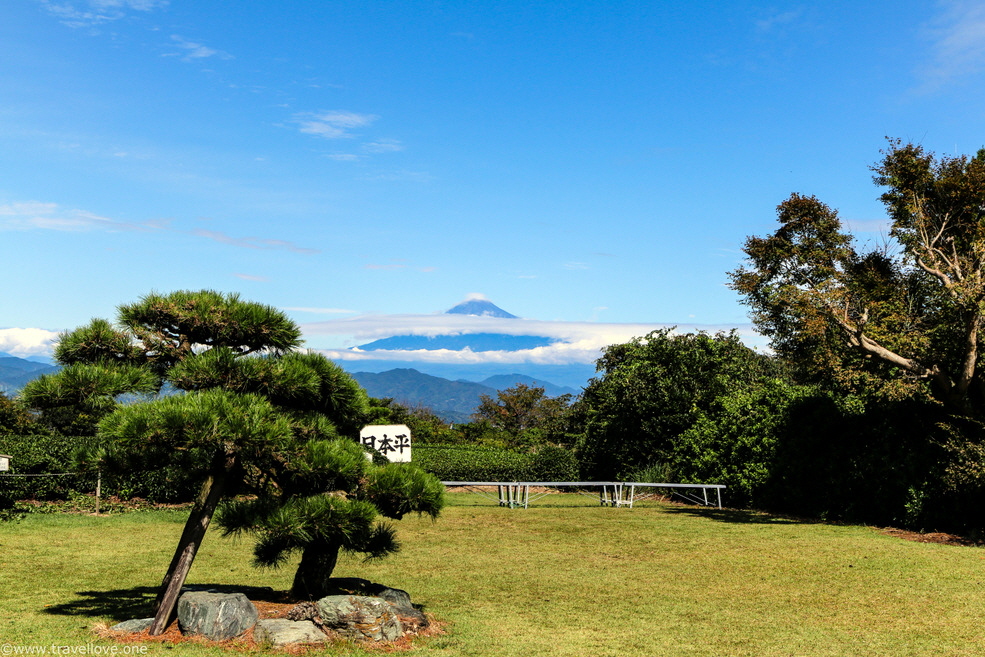
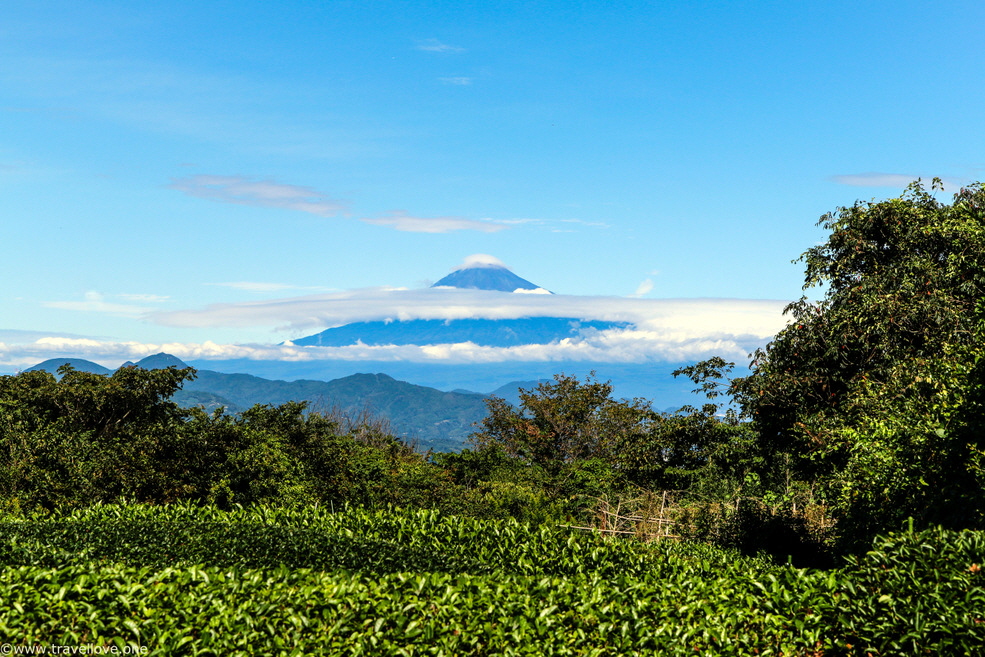
We were obviously delighted to be so lucky!
Before leaving the garden, Koji asked us whether we were interested in tasting some of the tea. We happily agreed. The owners made us a green tea and served it with intensely green matcha candy.
One of Birgit’s bosses is Japanese and originally from this area. We bought him a pack of the tea as a souvenir from his home, which we liked so much. (He was very happy about both).
Afterwards Koji took us to Miho Beach and Miho Pine Cove, another attraction in Shimizu. On our way there he pointed to sculptures on some of the buildings and roofs. It was tennyos dressed in “Hagoromo” (plumage) – mythological celestial maidens. According to legend, tennyos are the emperor’s ladies of the court in heaven.
Coincidentally, the annual Hagoromo Nō Festival took place on Miho Beach that day. Nō is a form of traditional Japanese theater that is only played (danced) and musically accompanied by men. Birgit was an exception.
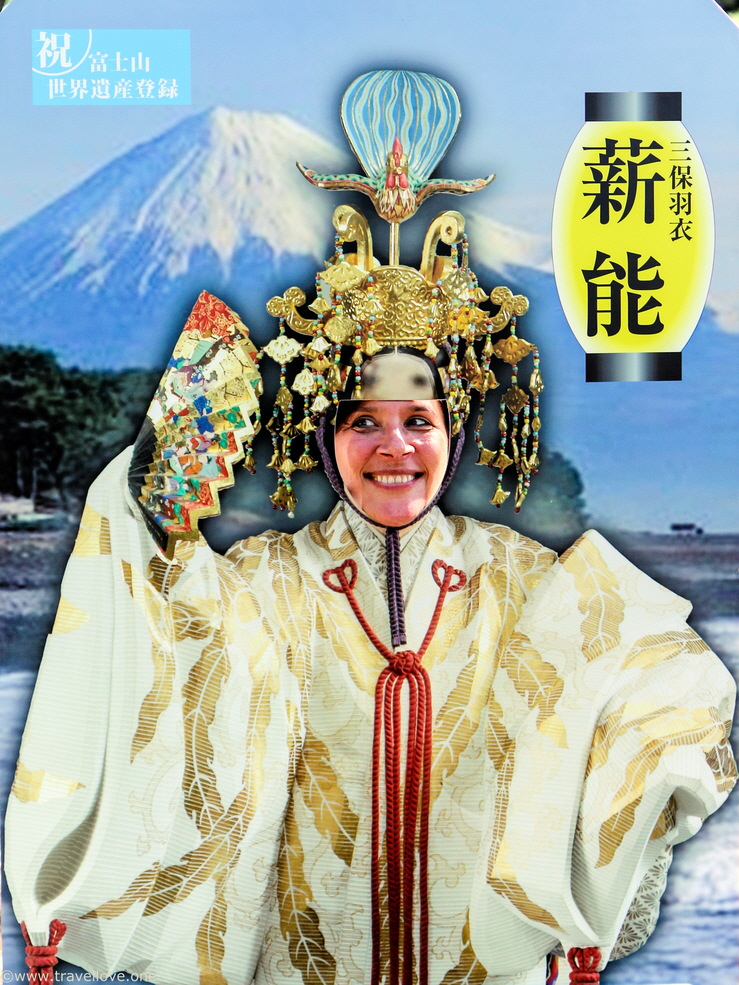
At the entrance to the beach, we stopped at the Hagoromo Nō Matsu tree, where Koji explained what the Hagoromo legend was about.
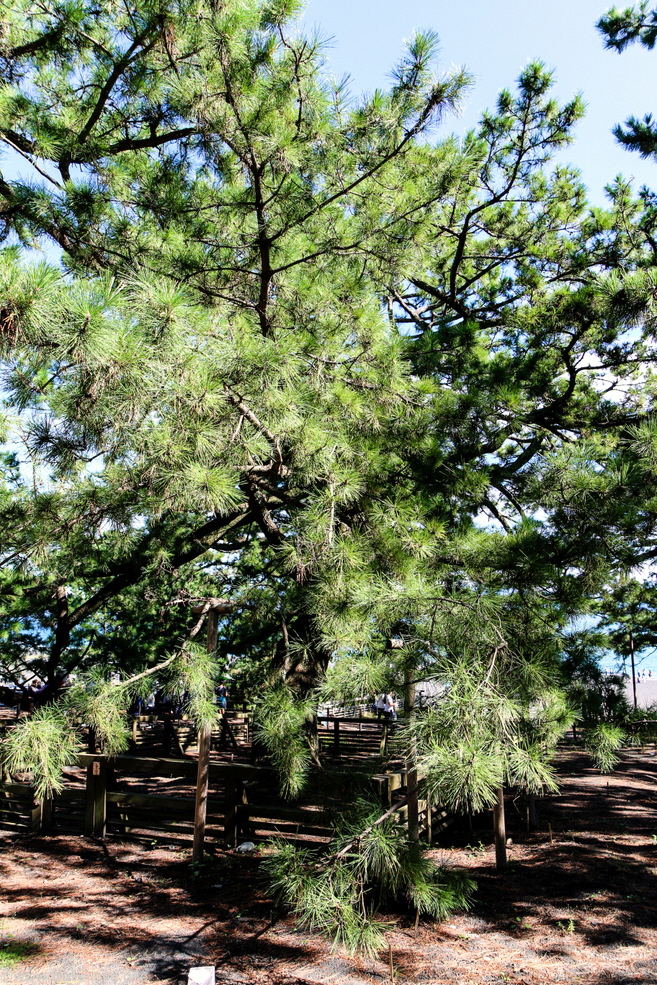
According to legend, Hakuryo (White Dragon), a fisherman, found a kimono hanging from this tree. He had never seen such a beautiful kimono before and took it from tree to take home with him. That’s when he heard a voice saying “This kimono is mine, please don’t take it away from me!” The voice belonged to a beautiful woman in the shade of the tree.
She said “I am a tennyo. This kimono is a Hagoromo, a plumage”. As a result, the fisherman desired the kimono even more and didn’t want to return it. Thereupon the tennyo wept bitterly and declared that without her plumage she wouldn’t be able to return to heaven.
Hakuryo had a good heart and said that he’d return the Hagoromo if the girl showed him the dance of the tennyo.
The tennyo was overjoyed, but said she needed the Hagoromo to dance.
The fisherman didn’t trust her and said, “You could return to heaven without showing me the dance.”
To which the tennyo vigorously replied, “Deception and betrayal are part of the human world. They don’t exist in heaven.”
Thereupon Hakuryo was very ashamed and returned the plumage. The tennyo wrapped the dress around her and to a music that suddenly sounded out of nowhere, danced for him before she rose higher and higher until she finally reached the sky.
This legend is today a famous piece of Nō theater.
Near the tree we found the monument of Madame Hélène Giuglaris (1916-1951). Madame Giuglaris was a French ballerina who was enthusiastic about the hagoromo nō dance. She taught herself the dance and performed it on stages in France. It was her heart’s desire to once travel to the place of the legend, but it wasn’t granted her due to her early death.
Her last wish was that her hair be buried near the Hagoromo tree. Her husband travelled to Japan and responded to this request. Residents of Shimizu were so moved by this story that they erected a memorial for her at this spot.
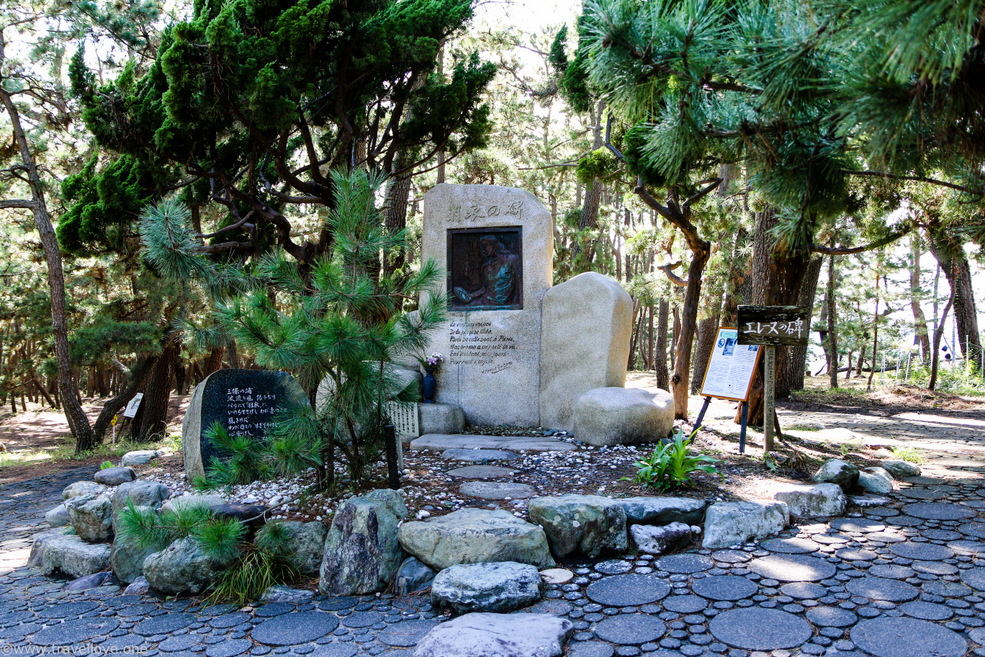
From the back pebble beach we took another photo of Fuji before we returned to the car.
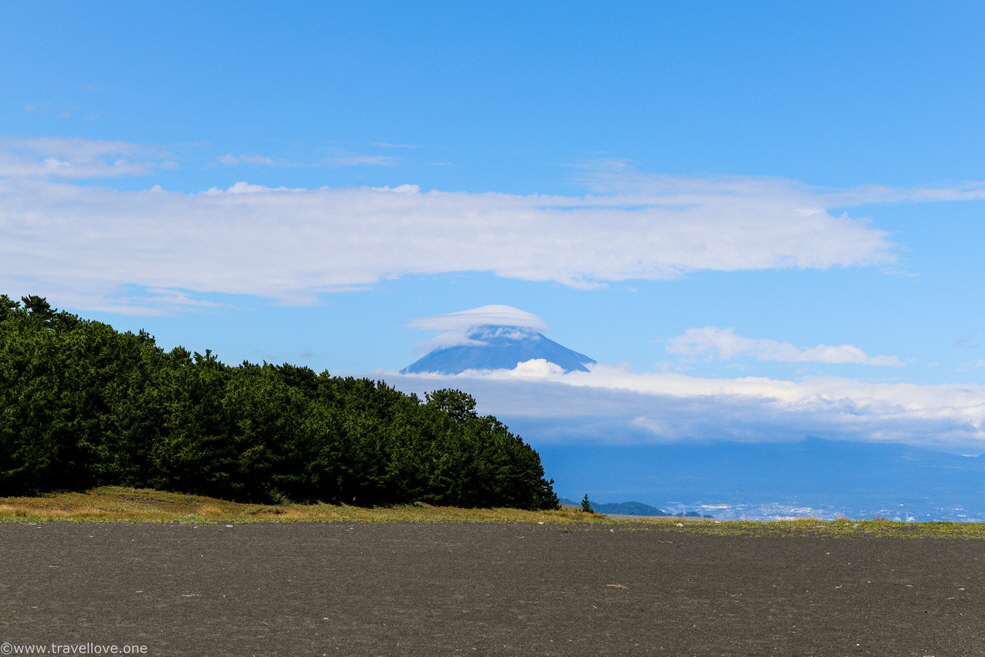
On our way back to the parking lot, participants of the festival with torches came our way.
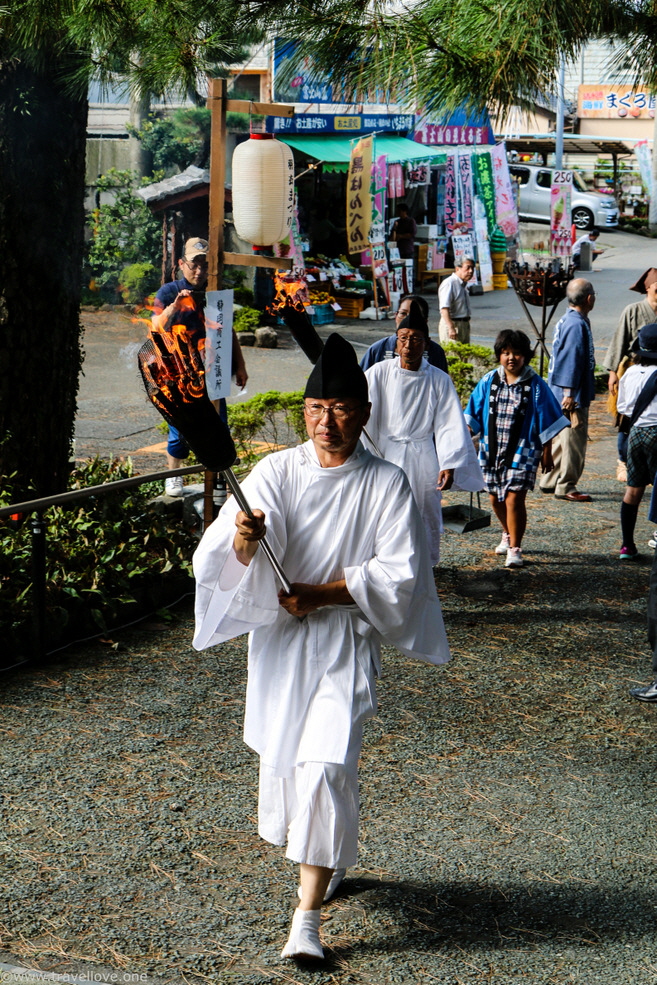
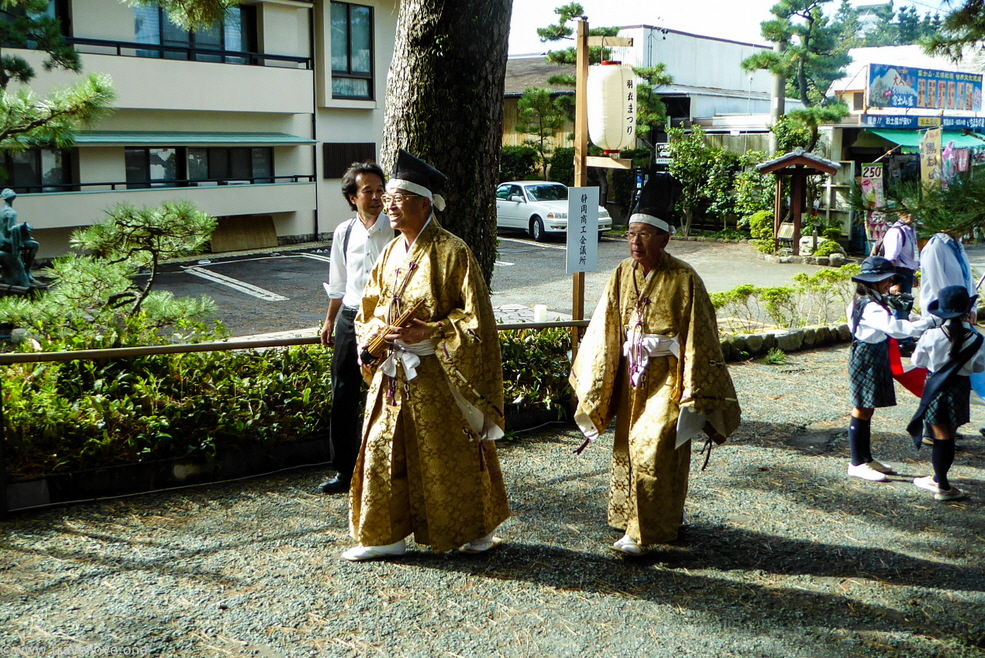
And then Koji drove us back to the port, where we thanked him sincerely for his splendid service. We can wholeheartedly recommend him as a tour guide. In a friendly and pleasant way, he has given us some of his extensive knowledge on this day.
When leaving, many onlookers waved goodbye to us. Wishing a leaving cruise ship farewell seemed like a festival here.
www.travellove.one • www.thecruise.report • www.travelandcruise.net
© 2021 Die Rechte an Texten, Fotos und Videos liegen beim Autor der Webseite. Die Nutzung ist nur nach ausdrücklicher Freigabe erlaubt.
